Introduction
about the writer
Chris Fremantle
Chris Fremantle is a producer and research associate with On The Edge Research, Gray’s School of Art, The Robert Gordon University. He produces ecoartscotland, a platform for research and practice focused on art and ecology for artists, curators, critics, commissioners as well as scientists and policy makers.
about the writer
Anne Douglas
Anne Douglas is a Professor Emeritus, previously Chair in Art in Public Life at the Robert Gordon University, Aberdeen Scotland. She has focused, over the past 25 years, on developing doctoral/postdoctoral research into the changing nature of art in public life, increasingly in relation to environmental change.
In Berlin, the Harrisons characteristically turned their attention to a possibility of healing brought about through ecological understanding, creating a proposal that enfolds the destruction of the infrastructure of terror, reducing it to rubble and then lending itself to new life through the forces of nature.
The Harrisons (Helen Mayer Harrison (1927-2018) and Newton Harrison (1932-2022) are widely acknowledged as pioneers in bringing together art and ecology into a new form of practice. They worked for over fifty years with biologists, ecologists, architects, urban planners, and other artists to initiate collaborative dialogues. The works they made in various places from the second half of the 1970s stand as proposals for putting the well-being of the web of life first. The Harrisons’ visionary projects have, on occasion, led to changes in governmental policy and have expanded dialogue around previously unexplored issues leading to practical implementations variously in the United States, Europe, and Asia.
In writing and inviting people to contribute we sought advice and received extensive help from both the Harrison Studio/Center for the Study of the Force Majeure (CFM); from Kai Resche and Petra Kruse, curators and editors with the Harrisons (and also the Berlin branch of CFM), as well as from David Haley (who was the project manager for Casting a Green Net and Associate artist for Greenhouse Britain: Losing Ground, Gaining Wisdom (2007-09).
We offer the following passage from one of the Harrisons perhaps less well-known works as a prompt, encapsulating their approach:
Trümmerflora, or rubble plants and trees, are a special phenomena unique to heavily bombed urban areas. The bomb acts as a plough, breaking brick, mortar, metal, and wood into fragments and, in a single gesture, mixing these with earth from below. The earth often contains seeds, dormant from the time of first construction on the site, that may have been buried for a century or more. These seeds come to light, and those that can live in this new and special earth, grow and flourish. Other seeds, dropped by wind and by animals, also survive in limited numbers in this new soil, this rubble. Hence the name Trümmerflora, or loosely translated, rubble flowers.
Harrison and Harrison 1990 ‘Trümmerflora: on the Topography of Terrors’ in Polemical Landscapes California Museum of Photography pp 12-13
This 1988 work by Helen Mayer Harrison and Newton Harrison during a period of residency in Berlin emerged in response to overlooking the derelict site that had been the headquarter of the Gestapo, Storm Trooper, and Secret Service Operations, i.e. the bureaucratic center for the Death Camps and Labour Camps of the Nazi regime. Earlier attempts by others to create an appropriate monument or memorial to the horrors of this urban site had failed. As Jewish people, this site was hugely significant. However, the Harrisons characteristically turned their attention to a possibility of healing brought about through an ecological understanding of the site, creating a proposal that enfolds this history, the destruction of the infrastructure of terror reducing it to rubble, lending itself to new life through the forces of nature.
Read an extended version of this Introduction.
The contributors to this round table, including artists, curators, environmentalists, landscape architects, and scientists, have all reflected on what they learned from meeting and working with the Harrisons. For some, this starts with Portable Fish Farm: Survival Piece #III which caused a furore when it was exhibited at the Hayward Gallery in London in 1971. A number of others were involved in various ways (curator, environmentalist, scientist, artist, and project manager) with the Harrisons’ work Casting a Green Net: Can it be we are seeing a Dragon? (1998) made as part of ‘ArtTranspennine98’, a major regional collaboration between the Tate Gallery Liverpool and the Henry Moore Sculpture Trust. Others have much more recent experiences of Newton Harrison as he continued the practice, including curating an exhibition Eco-art Work: 11 Artists from 8 Countries for Various Small Fires in Los Angeles in 2022, and developing the work Sensorium.
Contributors reflect on how working with the Harrisons in various different ways informed, changed, and developed their practices. Some talk about having the strictures of their respective disciplines and working practices lifted and their thinking transformed. Others talk about the love, the love between the Harrisons, and the wider empathy reaching beyond human-centredness that they engendered.
Click here for a more in-depth reflection regarding this roundtable.
Richard Scott
about the writer
Richard Scott
Richard Scott is Director of the National Wildflower Centre at the Eden Project, and delivers creative conservation project work nationally. He is also Chair of the UK Urban Ecology Forum. Richard was chosen as one of 20 individuals for the San Miguel Rich List in 2018, highlighting those who pursue alternative forms of wealth.
Their practice was enabling and real and embodied timeless wisdom for people and nature, and these principles and their artworks will stay with me.
At the 1999 Society for Ecological Restoration (SER) Conference in San Francisco, a special art group was formed. David Haley from Manchester Metropolitan University proposed and went on to curate The Harrison Studio to contribute to the 2000 SER Conference in Liverpool. The work they presented and spoke about, Casting a Green Net: Can it Be We are Seeing a Dragon? was the first artwork I had seen that visualised and projected landscape-scale restoration within the context of climate change, poetically describing the need for us to “gracefully withdraw”.
The Harrison’s work was so playful and was the first time I’d seen artists enhance and translate classic ecological methodologies, signaling how we need to be bold. The Dragon highlighted the green East-West corridor between the river estuaries of the Humber and the Mersey. The Ordnance Survey maps hung splendidly on the wall of the Adelphi Hotel in Liverpool and made for a very memorable piece because the shape of the biodiversity across the North of England equated to that of a dragon, sparking imagination. Significantly it almost exactly mirrored the original outlines of the proposed new Northern Forest (2018), and it definitely influenced the ambition of our thinking about the Northern Flowerhouse.
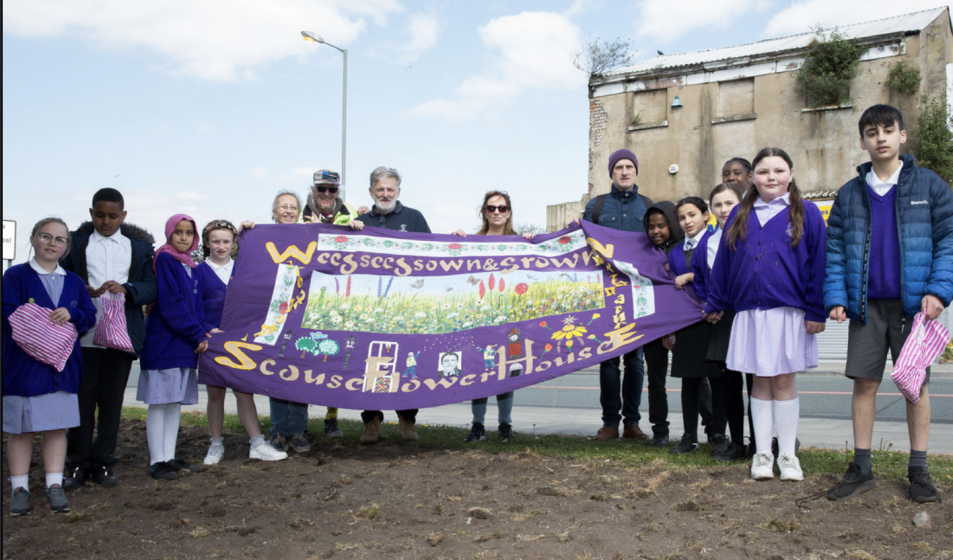
As the organisation Landlife was closing, our vision for wildflowers as infrastructure and the locally coined ‘Northern Flowerhouse’ took shape, and the Singh Twins designed it up for us. Their art is doubly powerful, as they strengthen each other’s resolve and knowledge base, in the way they depict historic and current exploitation and the way in which they share traditional cultural practices and meanings. Working with my partner, Polly Moseley, enabled me to access and understand more of the calibre and potential of artists on Merseyside and to understand how important the Harrison’s partnership was over time.
In a video conversation, Newton said, “Overburden yourself, reflect and compose and look for original avenues” He talked of “playing catchup”, and spoke of big backyards and massive change ― accommodating the air, the land, the soil, and area ― above all avoiding ‘tower’ thinking of academia, and connecting with and through the citizen. Their work always included messaging, which was accessible and layered, like the messaging through Peter Carney’s banners, which have become our wildflower totems at events. Landlife (1975 – 2017)’s tenet which we attempted to embody was “creative conservation”.
Their Force Majeure “framed ecologically” was about articulating an evolving and boldness of vision ―this theme keeps appearing― and bold vision, and it reminded me of the simple advice from great gardener and writer, Christopher Lloyd, when he witnessed our wildflowers project in Liverpool in 1999, “Be bold” he said. The Harrisons always were direct and unapologetic with their work, including the Endangered Meadows of Europe. They understood the power and symbolism of moving meadow to cover an acre and a half rooftop on the top of the largest and most visited museum in Bonn, Germany, including an opening speech delivered by Angela Merkel. In Liverpool, we have positioned our landmark and gateway sites, around the Everton Lock Up badge, or along much-used trunk roads, and the Mersey Tunnel to achieve visibility, paving the way for a mosaic of habitat, urban or rural. It is about what we can do in different places, together, with real communities of interest, and heart and soul principles, be it Merseyside, Manchester, Cornwall, Morecambe, Dundee, or Auchterarder. And with the irony and humour reflected in Jamie Reid’s “Nature Still Draws a Crowd” (Suburban Press 1977). We worked with Jamie to create a large Ova in a huge field of wildflowers at the Lost Gardens of Heligan last summer. I think the Harrison’s would have approved.
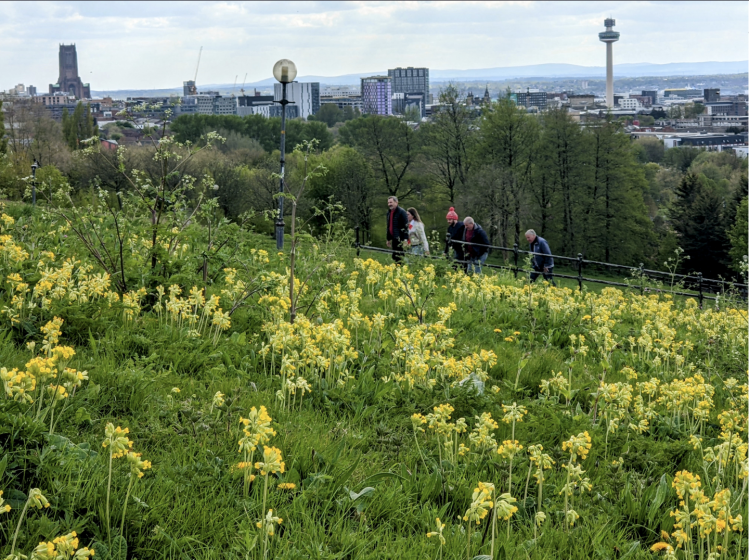
The Harrisons to me were intriguing, curiosity-raising, and pragmatic. The more you found out about their work, the more depth it offers. Some were shocked by it. Spike Milligan ― a patron of Landlife the charity I worked for for 26 years ― was one. Spike arrived outside the 11 Los Angeles Artists exhibition at the Hayward Gallery in London in 1971 and smashed the Haywards’ glass front doors with a brick! The Harrisons were exhibiting a Portable Fish Farm an ecosystem that could be harvested and eaten. This triggered headlines, Arts Council anxiety, and questions in Parliament. When I discovered this, “Blimey” I thought.
The Harrisons’ philosophy avoids despair and wasting energy. For example, noting Scotland has a million foragers, and every person could have one hectare of land, points towards land reform with poetry and chutzpah. For me, the currency of seed and what you can do with it, experimenting with soil and substrates, and signaling massive change are all vitally important. As ecologists, we should take heart in reflecting on the work of the Harrison Studio, their belief in the power of the spoken word and bardic mystery, and their intolerance of technocracies. With wonderful dialogue of the possible, they brought attention to detail and employed simplicity. For example, in the recreation of Hog Pasture: Survival Piece #I Wilma the Pig in 2012, how the Harrisons restaged that with joy, again, featuring meadow pasture and a pig (the pig had been denied by the art gallery the first time round).
Last year in 2022, I launched the Cultural Soil Charter (which grew out of discussion with the Chartered Institute of Ecology and soil advocates across the UK) at the World Congress of Soil Science in Glasgow, and was thrilled this coincided with the British Soil societies staging of Newton Harrison’s On The Deep Wealth Of this Nation, Scotland. I checked back and reflected on Making Earth (1969-70) when Newton made topsoil in front of his studio, and this connected in my mind with Glasgow CCA’s 2022 exhibition of tonnages of live soils. The Eden Project would do this as the origin of their own journey in building a theatre of plants and invite others to observe and participate, to show what we want to do with circular economies for soil, urban substrates, and what we can grow on them.
The Harrisons read this piece on ‘Mixing Mapping and Territory’ (2013):
Where would you begin? Where the terrain permits and the will exists. Choose Your Mountain. That is to say you can begin anywhere.
Their practice was enabling and real and embodied timeless wisdom for people and nature, and these principles and their artworks will stay with me, as Scouse Flowerhouse develops as a co-operative, and the National Wildflower Centre’s creative conservation work grows, in many ways, we will continue to honour and riff off their work.
Cathy Fitzgerald
about the writer
Cathy Fitzgerald
Dr. Cathy Fitzgerald, Founder-Director of the global online HAUMEA ECOVERSITY. Empowering creative, cultural, and business professionals for wise, compassionate, and beautiful creativity. Consultant, international speaker, advisor, and mentor on ecoliteracy & accredited ESD transformative learning Earth Charter educator and Research Fellow on Art & Ecology for the Burren College of Art.
For me, this is the most profound legacy of the Harrisons’ work – understanding how creativity is an essential driver for holistic ecopedagogy across all education.
Helen and Newton Harrison’s work has powerfully influenced my thinking and creative practice since the late 90s. I still clearly remember the afternoon coming across a summary journal article about their work in the library of the National College of Art and Design in Dublin, Ireland. I recall feeling intense relief at finding a comprehensive articulation of the multi-constituent aspects of ecological art practice and over time it shone a light on a path for me to develop similar creative ecological endeavours. The Harrisons’ reflections on their dialogical, participatory, question-led practices helped me understand why integrated, more holistic practices are a radical departure from the conventions of modern art, and why they have the social power to inspire people to live well for place and planet. Today, largely inspired by the Harrisons’ practice over many decades, I would argue ecological insights must inform and guide creative practice—and all our activities—for personal, collective, planetary, and intergenerational well-being.
However, with little college or peer support, my progress to develop and articulate a similar practice to the Harrisons was very slow. Around the late 90s, I was also reading art critic Suzi Gablik’s Re-enchantment of Art and Conversations Before the End of Time. For many years afterwards, I was mystified why the Harrisons’ and Gablik’s work was rarely discussed in my undergraduate or postgraduate art studies, or even during doctoral research that I completed in 2018. Looking back, I believe I came to this topic earlier than most because I had previously worked in science and environmental advocacy. It also took me time to appreciate that illiteracy around ecological understanding, common in current art education, profoundly precludes many from understanding the gravity of humanity’s predicament, and correspondingly why ecological insights insist on a paradigm shift in contemporary art and the dominant culture as a whole.
My difficulties to develop an ecological art practice continued through my doctoral studies; I found it difficult to push past artistic conventions and disinterest that the ecological emergency was a crisis of the dominant culture. Even with my background in science, I had to persist to explain my audacity to explore creative practices that crossed disciplinary boundaries and lifeworld experience. Here the published journal articles on the validity and importance of the Harrisons’ pioneering prescient practice, with others following in similar ways, literally gave me permission to continue my practice and research. I will always be grateful, remembering a particularly difficult time around 2011 when I was considering abandoning my doctoral studies, when Helen and Newton wrote to me out of the blue ‘Dear Cathy, from our perspective, very good work!’
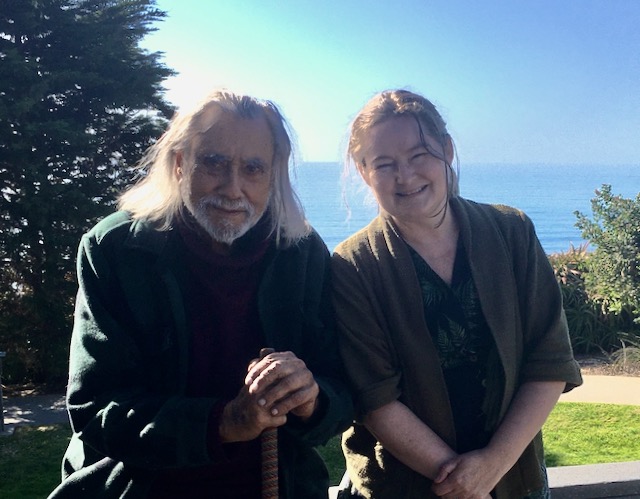
Today, I feel the relevance of the Harrisons’ work is stronger than ever. I can also confirm that the importance of their journey to develop and articulate ecological practice extends beyond the contemporary art world to contribute to envisioning best practices in broader sustainability education. These realisations arose recently after an unexpected opportunity to learn with leading international sustainability educators at Earth Charter International, which hosts the UNESCO Chair of Education for Sustainable Development (ESD). Looking at their key research insights of emergent holistic education for sustainability —integrated approaches to advance wisdom on how we must live well with others and the wider Earth community— I realise that the Harrisons’ real-world ecological art practices, facilitating communities to creatively question and embrace many ways of knowing, exemplify developed participatory, multiconstituent ecopedagogy. Additionally, the Harrisons provide much insight to sustainability educators on how creative practices, in particular, are essential to make sustainability learning inclusive and inspiring to diverse communities. As our society and the art world becomes more ecoliterate, I believe the Harrisons’ (and similar creative-led ecological practices) leadership will be more appreciated. For me, this is the most profound legacy of the Harrisons’ work – understanding how creativity is an essential driver for holistic ecopedagogy across all education.
Terike Haapoja
about the writer
Terike Haapoja
Terike Haapoja is a visual artist based in New York. Haapoja’s work investigates the existential and political boundaries of our world, with a specific focus on issues arising from the anthropocentric world view of Western traditions. Animality, multispecies politics, cohabitation, time, loss, and repairing connections are recurring themes in Haapoja’s work.
For Newton, this kind of awakening had happened early in life, when he was driving along a highway in California, seeing the broken landscapes under constant, violent human excavation. Suddenly, he said, he could hear the earth screaming.
Like many, I was introduced to Helen and Newton Harrison’s work in art school. In the early 2000s, when I studied, ecology wasn’t yet trending, and their work seemed like fresh air for someone like me who felt that the most urgent question in the world, the environmental crises, was surrounded by a numbing silence. My own work, however, was video-based and centered on the figure of the animal, and while our works sometimes ended in the same shows, we never met in person.
Then, on one dark evening in 2019, I saw a message request on Facebook, and when I clicked on it I found a message from the legendary Newton Harrison. He had encountered one of my works somewhere and wished to connect. I was delighted and honoured, and we started an exchange that evolved into emails and Zoom calls and lasted until his passing.
One of the first works he sent me was a meditation on sea ecologies called Apologia Mediterraneo. The ten-minute video combines found footage and Newton’s voice-over, reciting a poetic letter addressing the sea and the troubles and pains it has to endure. Newton’s voice radiates empathy and solidarity with the Mediterranean Sea, and this empathy towards and solidarity with the more-than-human world always characterised his attitude and our discussions. He would passionately side with the web of life in our conversations on environmental justice: he wanted to be responsible and accountable to it directly, not to a human political system that represented a species he called ”an ungovernable exotic” that always hoarded resources to ”the human reproductive machine”.
We discussed empathy and what awakens it in people. We agreed that it had to be an embodied, particular experience because one can not convince another to feel for an animal, or an earthworm, or earth itself by rational arguments. For Newton, this kind of awakening had happened early in life, when he was driving along a highway in California, seeing the broken landscapes under constant, violent human excavation. Suddenly, he said, he could hear the earth screaming. From then on, earth was someone, not something.
He talked about his career becoming huge at the age of 88. There was no sign of slowing down, on the contrary: he didn’t want to make compromises or to scale his ideas down, but for the world to change, and his work to become more than a representation of what life on earth could be. He wanted it to be the real thing. Helen’s Town, a homage to Helen in the form of an eco-village with a production timeline of hundreds of years (because that’s how long it takes for trees to grow) was a serious dream and his frustration with curators who instead wanted something gallery size was palpable.
In 2020, when the pandemic had locked all of us in, I invited him to contribute a dialogue with me to a small exhibition I made about art, love, and relationality. My premise was that as artists our practice is always impacted by the relations that carry us, and our muses, whether they are human or more-than-human. In our dialogue, he talked about his lifelong work with Helen and their mutual excitement towards their work and life together, and how it was her who had initially led them to the question of climate change. And how everything that he did was and would be informed by her and their work together, and how her perspective still acts as a moral compass to Newton. Because, he said, ”Helen had the best ethical sense of anybody I ever met in my life, with one exception: Eleanor Roosevelt. So I put the bar high.”
I remain grateful for that Facebook message and that I had the honor of befriending this pioneering ecological thinker for these last years. In an email on the 10th of March, 2020, Newton wrote: “If possible I would love to democratize a little bit of hope in what
appears to be an ongoing and increasingly intense array of
catastrophes.”
We still have time to do just that.
Jamie Saunders
about the writer
Jamie Saunders
A resident of north Leeds in the Aire Valley, Jamie has worked in a northern local authority since 1992 as a public servant in local government working in strategy, sustainability and regeneration. He is a former trustee of the Permaculture Association (Britain) and a qualified futurist (MA foresight and futures studies, Leeds Beckett University)
Their work stands as a guide. When I remember, when I am provoked, they hold fast to more than the immediate concerns and less-than-life-enhancing work of day-to-day living. The life-web: see it, breathe it, hear it.
A life force for the life-web…
So, where to begin? With Newton, with Helen, with the Harrison Studio, with those ‘agent provocateurs’ and allies of those of us fortunate to have known them.
I can’t remember the first meeting, though this matters so much less than the essence of Newton, with Helen, through David Haley, creating connections across the Pennines. Teasing out a more ecological, more humane, and more progressive future for the North. A counter-point to the ‘business as usual’ of sprawl and expansion, into places and communities that could be woven back into ‘becoming’ as part of the life-web – as the Harrisons said, “every place is the story of its own becoming”. There it is again, that ‘life-web’. From ArtsTranspennine98 we saw a dragon emerging.
And I was ignorant of it in so many ways. It took the eco-artists from far away, the spirited and determined advocates to reveal, remind, and offer encouragement—and some serious challenge to personal choices and professional practice—to recentre on what really matters. “How big is here?” they asked. For a north in need of thinking deeply about the future ahead, and not playing catch up with that there London and the South or creating a ‘global mega-city region’ of 15m people, this continues to be a critical question.
We meet again many more times than I realise or really thought likely. Each time adding layers to thinking, linking the long past with the deep futures ahead: preferable, probable, possible, plausible. Trying to better understand the best and worst of the bureaucracy of local administration, of localised politics, of siloed and constrained professions, and disconnected communities.
Putting stewardship of place into place to work at the scale necessary for ecological regeneration and care.
Taking on ‘post-disciplinary practice’—with and alongside others—to do the research, to be commercial, to be life-enhancing. To do the work.
And gladly hosting Newton for an English Sunday lunch. And watching from away—as the global-local work of the Harrison Studio expands; from the glaciers, to the watersheds, from the meadows, to the cities, from the uplands to the top of the world. And back from the Pennines to the British Isles as a whole, responding to #astheseasrise. Greenhouse Britain: Losing Ground, Gaining Wisdom—beyond the cleantech and the vested interests and out into the world of deep adaptation, of civic futures and the ‘force majeure’. Getting to grips with what co-evolution really means, over centuries, eras, epochs not just quarterly results, annual reports, and election cycles.
Albion, of many isles, is surrounded by water. As the fundamentals shift and we slowly, furiously, adjust to what is becoming. For our children, our grandchildren. To be more than good ancestors. At the heart of ‘sustainability’—reclaiming the concept from ‘financial viability’ and ‘sustaining the now’ to legacy and the global majority and the ‘more than human world’; of habitats, species, and dynamic complex adaptive systems.
So much more to be grateful for. So much more to reflect on, to embrace, and to share. Far more than ‘artists’, beyond ‘marketable self’ and galleries. Beyond ‘land art’ and environmentally-informed practice. Deep ecological advocacy of the living world. Of a world that will, as Gaia suggests, recalibrate with or without wiser human co-evolution. The American dynamism and bloody-mindedness are challenging, generous, and impatient with many. In later life, an elder when so many need such wisdom for their villages, towns, cities, and places to be post-industrial, post-colonial, post-normal. To be places where we live within the natural world; living well, with health, with care, and with a spirit that speaks to the best of us.
The world is a lesser place for the passing of Helen and Newton and their co-creation and collaborations with family, friends, and strangers. Their work stands as a guide. When I remember, when I am provoked, they hold fast to more than the immediate concerns and less-than-life-enhancing work of day-to-day living. The life-web: see it, breathe it, hear it. It is all around and in conversations, images, poems, and a deep body of work. The echoes and the opportunities remain.
Working through the ethos of life-web advocacy and stewardship may mean we can find the practical, imaginative, creative, collective means of living well in place. Testing out co-existence, beyond the ‘anthropocene’, and living more fully in the ecocene/symbiocene. The eco-art of Newton and Helen is as critical now in guiding those that follow in deep adaptation. Humane, bioregional, and planetary scales would be a fine continued legacy.
Ruby Barnett
about the writer
Ruby Barnett
Ruby (Ruthanna) Barnett, Studio Manager and Senior Researcher at the Harrison Studio and Center for the Study of the Force Majeure from 2017-2021. After earning her Ph.D. in Linguistics, she provided advocacy in housing and homelessness, debt, employment, and welfare. As a lawyer in Oxford, she specialized in immigration and human rights.
The Harrisons – Greater than the Sum of their Parts
The work of the Harrisons caused a shift that has enabled me to embrace complex systems in a more visceral, thorough way than in my previous work.
I worked with Newton from 2017 until 2021. In those first months, Helen visited the studio daily and I had the privilege of witnessing their deep love and tenderness. I traveled extensively with Newton and there is an inescapable intimacy accompanying a person in their 80s on long-distance travel. I prepared slides for talks, checked on his insulin supplies, laundered his clothes, drafted abstracts for conference proposals, and made sure his nose was moisturized.
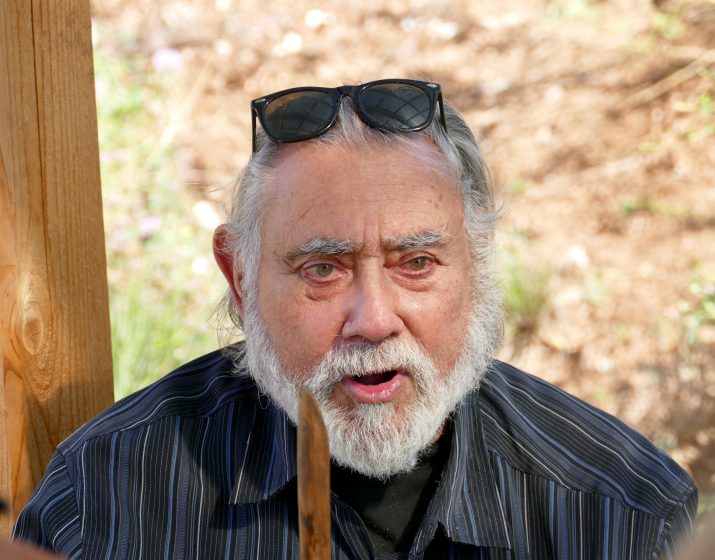
Spending time immersed in the works of the Harrisons, as well as being part of the development of new works, has affected me deeply. My perception is forever changed. Newton liked to use Cezanne‘s Mont Sainte-Victoire series to speak on perspective but, for me, the work of the Harrisons caused a shift that has enabled me to embrace complex systems in a more visceral, thorough way than in my previous work. The form and non-form; the category of both-and; creating momentum, energy, from the oscillation between polarities. Understanding humanity as only one small part of the web of life, while at the same time comprehending the value of my own self-realization as an individual. The difficult and the charming. The tolerance and impatience. The compelling use of beautiful metaphor (“every place is the story of its own becoming”) contrasts with stark truths (“a tree farm is not a forest and tree farm floor is not a forest floor”). The duality is often shown as a conversation between elements—sometimes Newton and Helen themselves (Serpentine Lattice, Greenhouse Britain) or between others (the Lagoon Maker and the Witness in The Lagoon Cycle, the male and female voices in the Sacramento Meditations).
Inspiration for these arose from Helen and Newton’s ‘morning conversations’, developed after reading the Morning Notes of Adelbert Ames Jr., a scientist whose work was in vision and later in perception, developed a practice of setting a problem in his mind before bed, allowing his unconscious mind to work on it overnight and finding often that a solution had come to mind by morning. Helen and Newton experimented with this, conversing over coffee each morning to further elaborate ideas. In the later works, after Helen’s passing, Newton sought to call in her thinking, her voice, since they had actively worked to “teach each other to be each other” in the years prior, knowing that one may eventually be required to carry on the work alone.
The Harrisons knew that we can interfere, manage, or guide the life web only in limited aspects and that there may be unintended consequences. At the same time, choosing to take on the work, the only work of value in our urgent times, is balanced by knowing that all work addressing the continuing of the life web will by its nature be ennobling. It will change, benefit, and grow the one seeking to act. Helen and Newton’s fearless approach allowed them to face the stark reality of our likely future, and to plan pre-emptively, accepting some outcomes as inevitable. They maintained deep love, delight, and playfulness enabling them to model their vision and invite us to learn to “dance with the rising waters”. Helen and Newton’s lives and works embodied the whole being greater and other than the sum of its parts.
Beth Stephens
about the writer
Beth Stephens
Elizabeth Stephens, Ph.D., is a filmmaker, performance artist, activist, and theoretician. Stephens gained her MFA at Rutgers in 1992 and completed her Ph.D. in Performance Studies at UC Davis in 2015. She is the Founding Director of the EARTH Lab (Environmental Art, Research, Theory, and Happenings) at UC Santa Cruz.
Newton and I were friends. Unlikely friends, but friends, nonetheless. Even though we could not have come from two more radically different worlds, we somehow connected and got a deep kick out of each other.
I initially met the Harrisons in 2007 when I was the chair of the UC Santa Cruz art department. Newton called and told my department manager that he wanted to talk to me. At the time, I was aware of the work of the Harrison Studio, but I didn’t know their work nearly as well as I would. Newton was interested in helping the art department form a graduate program, and Helen was firmly retired from being involved in the UC system. My department had its sights set on creating an MFA—which we have since done—however, Newton and I became convinced that we should create a Ph.D. focused on Environmental Art. I even earned a Ph.D. from UC Davis because the UCSC administration told us that we couldn’t launch a doctoral program because no one in the art department had a doctorate. What a fun adventure!!
The first creative encounter I had with the Harrisons was in Green Wedding to the Earth, (2008) part of a larger collaborative project I created with my wife/collaborator Annie Sprinkle. This performative wedding took place in UCSC’s Shakespeare Glen. Newton and Helen delivered the wedding homily. They instructed me and Annie, at the end of their oration, “And now let us go to the mountains!” I did go to the Appalachian Mountains of West Virginia where I grew up. There I made my first environmental documentary, Goodbye Gauley Mountain: An Ecosexual Love Story (2012). That film has had a long and fruitful run. In fact, this morning, someone from Paris emailed me to see if they could screen it. Of course, I said yes.
In addition to work-related memories, I have fond memories of dinners with Helen and Newton, first at their son Gabe’s house. I was astounded and completely impressed when Newton told me he was building a new house at the age of eighty. He designed his house with wide accessible passageways, heated floors, a walk-in tub, spacious art studio, and a room for a caretaker. He built that house for Helen—and I remember the day he told me that Helen suffering symptoms of severe memory loss—likely Alzheimer’s. I watched as he took care of her, powerless to ease her suffering as she entered the last phases of her life. I admired the fierce but tender care that Newton gave to Helen, and I appreciated that he made it possible for her to stay home until the very end. The house that Newton built for Helen accomplished its job. It sheltered her until her death, and it accommodated her caregivers. It allowed Newton to keep doing the work he was compelled to create ― to try to help everyone see and understand the necessary steps to assist our ailing planet and to continue to nurture the “life web.” There I spent hours talking to him about the ideas embedded in his projects, entropy, saving the world’s oceans, and finally, channeling the Earth itself. Although we did not agree on everything, and sometimes we disagreed mightily, we were always able to move beyond our differences, come back to the table, and resume our talks again and again. That house also sheltered Newton in his final days.
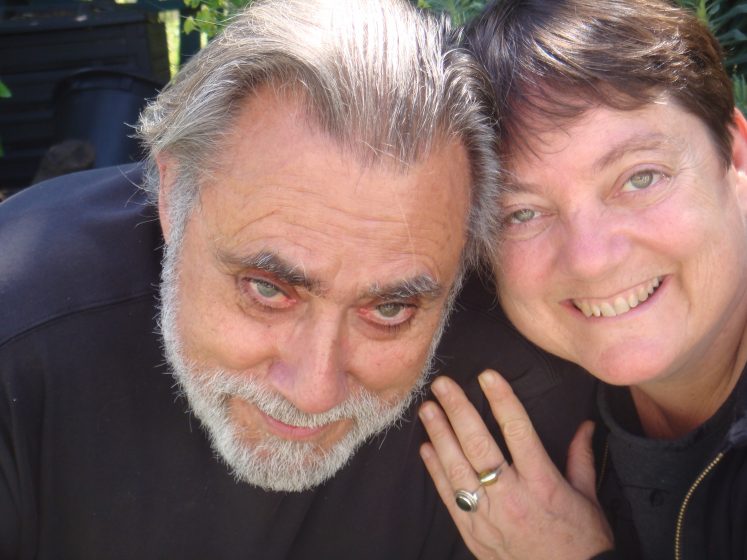
Newton Harrison was brilliant, and I recognize the huge contributions that he and Helen made to the art world, and especially to environmental art. But honestly, it was those moments of eating together or hanging out on his front stoop, chatting with his neighbors, and petting various dogs that I miss the most. Newton and I were friends. Unlikely friends, but friends, nonetheless. Even though we could not have come from two more radically different worlds, we somehow connected and got a deep kick out of each other. We recognized in the other the desire to try to make a better world than the world that we had inherited, through art. As we watched the Earth sending out increasingly urgent distress signals our mutual recognition created a bond that we recognized and appreciated as we sat together on his stoop and watched his front-yard meadow grow. In a world where the electrifying speed of our lives is exhausting beyond measure, to have a stoop, a little meadow, and a friend to visit, and talk to about art, life, and the state of the Earth, is nothing short of a miracle.
Janeil Engelstad
about the writer
Janeil Engelstad
Janeil Engelstad is the Managing Director of the Global Innovation and Design Lab and an Embedded Artist and Lecturer at University of Washington, Tacoma. The Founding Director of Make Art with Purpose, Engelstad produces Social Practice projects that address social and environmental concerns around the world.
Helen and Newton Harrison: Re-imagining the Context of Art
At the center of their work was love and perhaps this is the greatest legacy that the Harrisons leave.
The following text recounts one of many experiences I had with Newton and Helen Harrison, as well as a sketch of their creative process. The Japanese term, kenzoku, which literally means family and the presence of the deepest connection, expresses our relationship and exchange.
In October 2016, Newton Harrison came to Seattle to participate in 9e2 Seattle (9e2), a festival that marked the 50th anniversary of 9 Evenings: Theatre and Engineering (9 Evenings). Produced by Robert Rauschenberg and Billy Klüver, the original 9 Evenings was the first of several art and technology projects that would evolve into the non-profit group Experiments in Art and Technology (E.A.T.). 9 evenings consisted of hybrid art performances and video, created by ten recognized artists working with some 30 engineers from Bell Labs performed at the New York City 69th Regiment Armory, from October 13 – 23, 1966. The performances were as much about the new technologies the artists employed to realize their work as the themes being explored.i In contrast, 9e2 examined contemporary themes impacting the way people experience life on Earth, such as climate change, AI, and social justice.
Conceived and produced by Seattle writer and cultural producer John Boylan, 9e2 was organized by a curatorial team from the arts and technology fields. Boylan’s purpose was three-fold: to teach and inform (the history of 9 Evenings was little known among the local tech and creative communities); to build connections between local, national, and international artists and technologists; and to explore ideas about how artists, technologists, and other creatives function in the world. “Underpinning this purpose,” Boylan recalled “were the questions: What are you doing? Why are doing it? How are you doing it and, to an extent, what does new art mean?”ii
As a member of the 9e2 curatorial team, I organized a handful of projects and programs, including a conversation with Newton. He was thrilled to participate, for this was an occasion for him to publicly reflect on his conversations with Billy Klüver around the time that E.A.T. was being organized.iii “He had it all wrong,” Newton recounted, “and I told him thus: artists and engineers should not be focused on creative experiments exploring the impact of technology on the individual and society. Rather they should focus on how technology can be of service to ecology and the planet.”iv The growing impact of climate change, Newton believed, had proved the relevance of the environmentally focused work he had produced with his wife and creative partner, Helen Mayer Harrison and the misdirection of Klüver’s focus.v Additionally, Newton appreciated that the larger purpose of 9e2 connected to the Harrisons’ inquiry into the meaning of art and art making in the latter half of the 20th century, as the impact of commerce, industry, and development on the Earth’s eco-systems were becoming more and more evident.
Throughout their careers, Helen and Newton cultivated a wide creative and scientific community and I would wager that almost everyone in this community could tell dozens of anecdotes like the one I shared about 9e2. Long-time academics, Helen and Newton naturally imparted their experiences, ideas, and wisdom through storytelling and conversation. They were also skilled at asking questions that moved and transformed ideas and thinking into deeper reflection and expanded consciousness.
At the forefront of environmental art and interdisciplinary, collaborative design and production, the Harrisons imagined and were utilizing design thinking before companies like Ideo and Stanford’s d.school brought the process into the mainstream. Making Earth, Then Making Strawberry Jam (1969-1970) begins with Newton’s growing ecological awareness and empathy for earth. Through his research, Newton learned that “the topsoil was in danger in many places in the world. So, I took the decision to make earth . . .,” he wrote about the project.vi
The Harrisons would invest months and sometimes years in the empathy phase of their projects. Researching and meeting with people who had expertise in the history, ecology, and politics of the place and/or problem that a project might address. They sought information and expertise from noted professionals, as well as people on the edges of mainstream thinking and from Indigenous people before it was politically correct to do so. Practicing deep listening, they had conversations with the Earth itself. Then, they would define problems in poetic texts that framed their initial research into inquiries, conversations, wonderings, and proposals, which they sometimes called think pieces, such as Tibet is the High Ground:
Thinking about the greening of Tibet approximately 772,000 square miles
Which is eighty percent of the 965,255-square-mile Tibetan Plateau
We imagined a domain that was about eighty percent savannah
And twenty percent open canopy forestFor a productive, self-sustaining & complicating landscape to develop
Bold experimentation becomes an absolute requirement
For instance with glaciers retreating
We imagined assisting the migration not so much of species
But of species ensembles that form the basis
For a succession ecosystem to form
That follows glaciers uphill
We then imagined a water-holding landscape
Where terrain was appropriate
And subtly terraformed so that rains
Stayed on the lands on which they fellIn order to locate species groupings
that would form the basis for generating
a uniquely functional future landscape
Where harvesting preserved the systemsAlso, drawing botanical information from the recent Pliocene
When the weather was the same
As that predicated in the near future
Taking on the problem of inventing an edible landscape
Which will be self-seeding and perennial
A landscape unique in its food-producing qualities
As the harvest preserves the system
And this kind of designing as endlessly repeatable
A green plateau can sequester 3 gigatons of carbon a decadeTibet is the High Ground, 2005vii
Rich with ideas, metaphors and instructions, Helen and Newton’s texts offer tutelage in communion; setting out on a course of action; prototyping, testing, then putting into place projects around the world; a handful that will continue well into this century.
At the center of their work was love and perhaps this is the greatest legacy that the Harrisons leave. Love of life, love of each other, love of people, and love of the planet. This value fueled courage and gave them the freedom to let go, experiment, and knowingly create work that would come to fruition after they passed. This letting go of ego, creating work where Earth was the client, was critical for the Harrisons and should be for all of us who wish to advance solutions that lessen the impacts of climate change and improve life for humanity and the planet.
* * *
i While a few performances, such as Robert Rauschenberg’s Open Score, were an indirect commentary on contemporary issues such as the Vietnam War, Klüver did not position his curatorial work on the impact of technology on society until the organization of E.A.T. About 9 Evenings he wrote: “It is important to realize (understand) that 9 Evenings was a realistic event. It wanted to achieve very specific practical and social goals. Its development was coincident in time with the spreading mysticism about technology, the McLuhan concept that the communication means were extensions of the body, the psychedelic experience as an element of art! 9 Evenings was none of that. (The artists and the engineers) were rigorous, energetic, and authoritarian and would demand completely controlled situations. That the forces behind 9 Evenings should have converged at that time, must have been separate from political developments of the global art, psychedelic kind of situation.” (foundationlanglois.org)
ii J. Boylan, personal communication, February 2023.
iii One of E.A.T.’s first activities was to organize loose, international groups of artists and engineers, by geography, to potentially collaborate with each other. Newton was an early member of the United States’ West Coast group.
iv N. Harrison, personal and public communication, October 2016.
v N. Harrison, personal and public communication, October 2016.
vi Harrison, Helen Mayer & Harrison, Newton. (2016). The Time of the Force Majeure. Munich, Germany: Prestal
vii Center for the Study of the Force Majeure. (2018). The Center for the Study of the Force Majeure. [Pamphlet]. Center for the Study of the Force Majeure.
Les Firbank
about the writer
Les Firbank
Les Firbank is a British ecologist specialising in the sustainable management of land, with a particular focus on European agriculture. He collaborated with the Harrison while working at the Centre for Ecology and Hydrology and then at North Wake Research, both in England. He has recently retired from his chair in sustainable agriculture at the University of Leeds, and is a member of the European Food Safety Authority panel on genetically modified organisms.
Our art/science dynamic was based on mutual respect and talking through different approaches to common questions, rather than the more usual multidisciplinary approach of artists seeking to illustrate the science.
For me, it was about the process and not the product, it was about the collaboration and not the outcome. I’m a professional ecologist (now retired) and first came across Helen and Newton when one of their helpers phoned me up one Friday afternoon to ask for access to some landscape data I had access to. If I had been busier, or if it had been another time of the week, I would have pointed her to our website and left it that. But I was intrigued, Why did you want them? She didn’t know but would get the project leader to call back. Newton called from Manchester and explained they were mapping the north of England. Quite why a Californian artist duo wanted to map England from a base in Manchester baffled me, so I went down to meet them and their team. They were working on the ArtTranspennine98 piece entitled Casting a Green Net: Can it be we are seeing a Dragon? piece, re-imagining the area between Liverpool and Hull. The eventual outcome was a series of hand-coloured large-scale maps of the region. Each showed a different aspect of the area, one with planned housing developments, one with nature areas, and so on. I wasn’t too impressed until I went to the exhibit, and watched people react to the work. They moved in closer and back out, walking from map to map, getting a sense of their area and what was nearby. It was like a GIS but required physical interaction and engagement. For me, the work was the fun. I met with people from the industry, regulators, and the arts, but unlike in most of my meetings, people were able to be open and honest about their thoughts, as it was ‘only’ an arts project. This allowed a level of communication not possible in more formal settings, where the participants have their ‘party lines’ to protect. Communities of practice were set up that persisted long after the project ended.
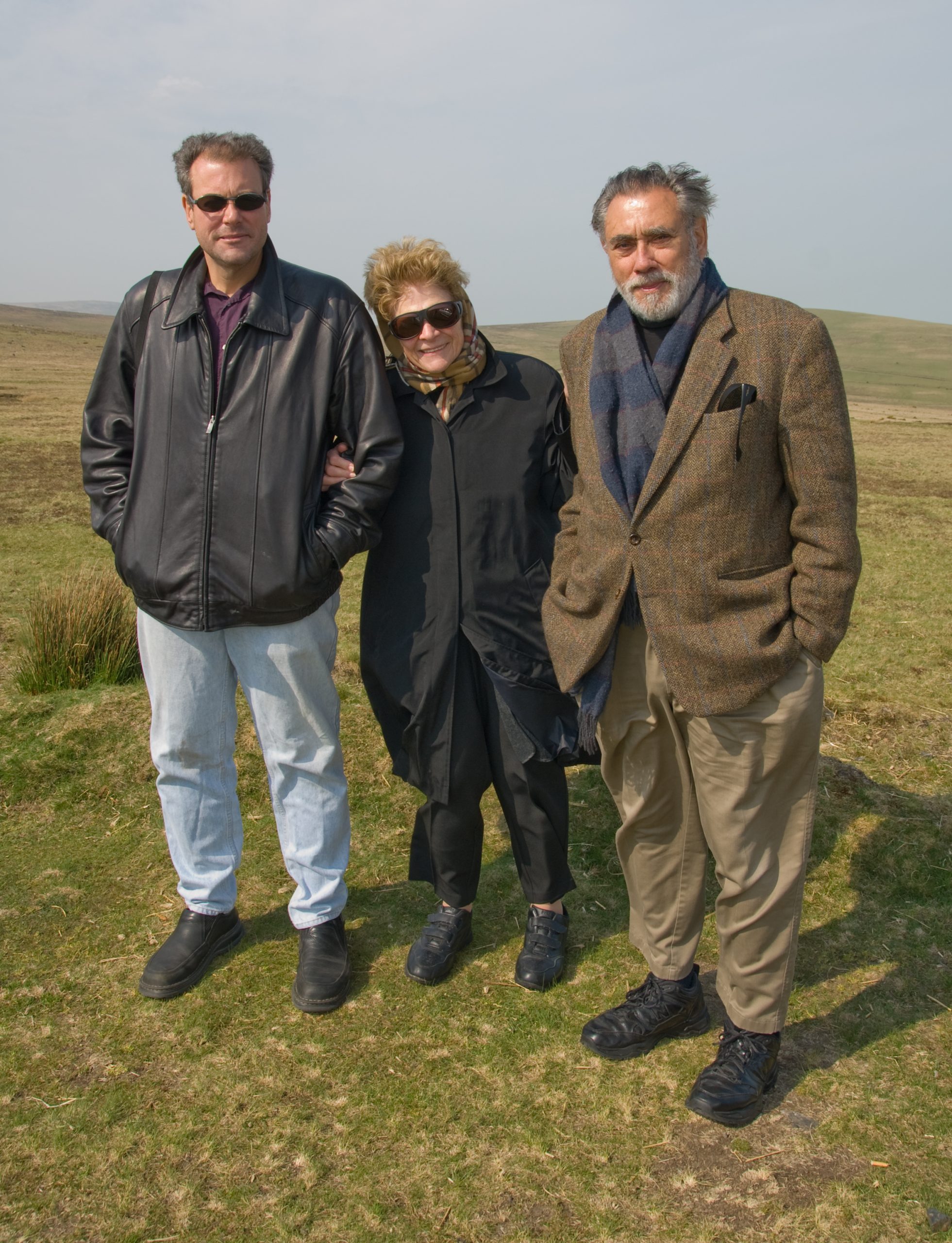
I worked with them again when I moved to Devon in 2007, where with David Haley we started a pilot project to design a sustainable village in the area. We set up a week-long workshop based in an agro-ecological research station in the region, enlisted an environmental GIS specialist Bruce Griffith, and set about our work. We made a good start to the work but, for various reasons, it did not really develop. The story can be found in a book chapter we wrote ‘A story of becoming: landscape creation through an art/science dynamic’ (Firbank, Harrison, Harrison, Haley, and Griffith. In Lobley and Winter (eds) 2009, What is land for? Taylor and Francis). Again, the pleasure was the discussions that addressed key questions which academics tended to shy away from, they were too broad. What do we mean by sustainability? How much carbon should one household have access to? Do we need livestock (yes!)? Was this really art? Before I had met the Harrisons I would have said no, this was ecology. But they taught me that anyone has the right to ask these questions and to seek and present answers, framed as they see fit. I framed my work in scientific papers, they used works of art. I used statistical tables; they used poetry and images. They are complementary, reaching different people.
Our art/science dynamic was based on mutual respect and talking through different approaches to common questions, rather than the more usual multidisciplinary approach of artists seeking to illustrate the science. Such questions have since become more widely asked, but tend to be answered too quickly, lacking in rigor. But I have tried to retain this questioning attitude and to pass it on to my students.
Tim Collins
about the writer
Tim Collins
The Collins + Goto Studio is known for long-term projects that involve socially engaged environmental art-led research and practices; with additional focus on empathic relationships with more-than-human others. Methods include deep mapping and deep dialogue.
Art and Change: The emerging social and ecological impetus
Artists have always critiqued and revealed belief systems, the program will teach artists to be effective agents of change. We seek to define the pedagogy of engagement.
A Dialogue from 2000 – with some edits and approval to publish from 2023.
Original Authors:
Jackie Brookner, Parsons School of Design, New York
Tim Collins and Reiko Goto STUDIO for Creative Inquiry, Carnegie Mellon University
Newton Harrison, and Helen Mayer Harrison Emeriti, University of California, San Diego
Ruth Wallen, Artist and biologist, San Diego
Josh Harrison, Director, Center for the Study of the Force Majeure, UC Santa Cruz
In 2000, we were engaged with the Harrison’s traveling to their home in San Diego with some regularity. Everyone involved in this discussion was struggling with adjunct, temporary, and year-to-year academic contracts. The Harrison’s proposed a dialogue which we might use to shape our individual and collective futures.
Art and Change Pedagogy
Philosophy: Nature as model, as measure, as mentor
Foundation Concept: Symbiosis and the biological imperative
Program: Ecologically engaged, Politically engaged, Socially engaged.
Emerging Issues: The public realm (social and natural) is in need of interventionist care. The visual arts with a history of value based creative-cultural inquiry are best equipped to take on this role. The long term goal, is to develop a cultural discourse which will:
1. expand the social and aesthetic interest in public space to the entire citizen body,
2. re-awaken the skills and belief in qualitative analysis (versus professional-quantitative analysis), and
3. preach, teach, and disseminate the notion that everyone is an artist.
The Problems: Artists are unprepared to take a productive role in civic discourse. Students graduate without the tools and bridging experience to allow them to learn the languages and process in the areas of ecology, politics, and sociology, and are therefore unable to enter into effective creative communication.
While information technologies is a burgeoning area of technical expertise, theory, and expression in the university setting, the emerging biological revolution is all but abandoned to the sciences. There isn’t a single department in the country with a program area which addresses the changing meaning of nature, restoration ecology, and bio-technology.
The traditional subject matter of art as well as the teaching methods taught in US art schools need an additional layering of information and training to expand the efficacy of an artists voice into these complex realms. Artists have always critiqued and revealed belief systems, the program will teach artists to be effective agents of change. We seek to define the pedagogy of engagement.
An Eco-Cultural Engaged Art: We propose a rigorous program of engagement training, providing artists with the theoretical and practical skills allowing them to productively engage the civic realms of politics and society with a primary focus on ecology/biology. In affect, we seek to transfer the language and skills which will allow artists to engage their colleagues in the professions of planning, design, and policy with equity and efficacy. Furthermore, to meet the challenges of a public realm increasingly challenged by private interests and legacy impact, the position of the artist will be defined in relationship to civic discourse rather than primary authorship.
The proposal includes a Graduate Major structure, an Undergraduate Minor/Concentration and a University Level Interdepartmental Credit Foundation Course. This was classic Newton, as he thought through the economics and the progression of creative/intellectual development which would be necessary for this new course of study. We can ‘hear’ both Helen and Newton’s voices throughout this proposal. We can also feel the love and care they put into this.
Johan Gielis
about the writer
Johan Gielis
Johan Gielis (1962-) is a Belgian mathematician-biologist, originally trained in horticultural engineering and landscaping. He has worked in plant biotechnology for over 25 years, with special focus on mass propagation and molecular and physiological aspects of tropical and temperate bamboos. In 1997 he discovered the Superformula, based on observations in bamboo.
A botanical Kepler and his Newton
What matters is not the individual forms, but how they are connected. Newton’s specific question was whether this would also teach us about ecosystems and continuity. He challenged and inspired me to look more deeply and broadly at ecosystems and our planet.
My work, which has its origins in botany, shows that shapes as diverse as starfish, flowers, squares, and cacti, the shape of atomic nuclei, and even our universe itself can be encoded in a geometric transformation called Superformula. So far, we have studied over 40000 individual biological samples, all of which are described by the Superformula; interestingly we found no circles or straight lines, the basic tools of our sciences. Our methods have now become a complete scientific methodology, with surprising new insights into how nature works and speaks to us. The attraction of the Superformula may lie in humanity’s need for a unified and continuous approach to life, nature, and our universe, as opposed to the discrete, random nature of our scientific worldviews.
What matters is not the individual forms, but how they are connected. Newton’s specific question was whether this would also teach us about ecosystems and continuity (he did not think the term sustainability should be used). He challenged and inspired me to look more deeply and broadly at ecosystems and our planet. How can we use these insights to “reshape and redirect the suicidal and ecocidal direction in which our Western civilization has taken us,” as Newton put it.
This is the direction I am currently pursuing with my mathematical friends. It is indeed possible to describe complete systems. The heart, once thought to be a pump, turns out to be a simple helical structure. Furthermore, the entire circulatory system combines the functions of transport with those of exchange, switching between a cylinder (for transporting blood) and a Möbius strip, a one-sided body for exchanging oxygen in the lungs and cells. These models should also work for ecosystems, translating holistic views into precise mathematics, as a language for the sciences and, he hoped, for the web of life.
Like nature, science is a never-ending endeavour, and what is cutting-edge today will be fossilized in the not-too-distant future. The Superformula is seen by many as the linchpin in this evolution. Another realization is that mathematics in its current state is a poor substitute for our deep knowledge. Mathematics is known as the language of science, the science of patterns. It is bad because it fails, as I call it, in its task of describing both patterns and the individual. With the Superformula, we can now study both the general and the particular, and link the discrete and the continuous.
After the publication of my article in the American Journal of Botany, many were excited by the idea of a unified description of the large and the small. This happened earlier in the sciences when the work of Kepler and Galilei inspired Isaac Newton to develop his System of the World half a century later. The American Mathematical Society wrote: “A botanical Kepler waiting for his Newton.”
How fortuitous it then was when Newton H. contacted me. It was not the Newton who would develop an updated world system or theory of everything based on my work. Instead, I got the opportunity to know Newton Harrison, a great artist and human being. However brief, our communication left a deep impression and will continue to be an important inspiration for my work in the sciences.
Ruth Wallen
about the writer
Ruth Wallen
Ruth Wallen is a multi-media artist and writer whose work is dedicated to encouraging dialogue around ecological and social justice. Her interactive installations, nature walks, web sites, artist books, performative lectures, and writing have been widely distributed and exhibited. She was a Fulbright scholar and is currently core faculty in the MFA in Interdisciplinary Arts at Goddard College.
Working in collaborative partnership, the Harrisons’ use of dialogue, with stories unfolding as they augmented or interrupted each other, amplified the generativity and generosity of their metaphors while spawning more.
“Somebody’s crazy, they are draining the swamps and growing rice in the desert…” “What if all of that irrigated farming isn’t necessary?”[i] I first heard Helen and Newton Harrison speak about their work at a lecture at the San Francisco Art Institute in 1977.
As a part-time art student, supporting myself working as an environmental specialist for the National Park Service planning office, the Harrison’s approach, distilling in-depth research into art-into metaphor, story, and performative activism―deeply affirmed my intuition to turn to art to promulgate an ecological ethic. They offered an enormously powerful example of employing art to raise crucial questions, spark imaginations, re-envision, and revitalize relationships between fragmented systems, and pose novel, ecologically sound approaches to environmental planning and policy.
Informed by their work, I received my first commission as an artist-in-residence at the Exploratorium. When I wrote to the Harrisons thanking them for their inspiration, they responded most generously, inviting me to come visit. Eventually, I moved to San Diego to study with Helen and Newton in the MFA program at the University of California, San Diego, (UCSD) and stayed in dialogue with them ever since, as mentors became dear friends, a relationship for which I am forever grateful. Of all that I learned from the Harrisons, perhaps the most important was the use of metaphor as a tool for thought. Influenced by the work of Lakoff and Johnson, the Harrisons understood that human thought is largely metaphorical and that the artistic imagination is crucial to identifying metaphors that can transform ecologies. Indeed, when I was a grad student, the creation of metaphor was a central concept taught in introductory art courses at UCSD. As ecological artists, Helen and Newton identified potent metaphors by listening to the wisdom of place, being attentive to the systems within which the place was embedded, and by naming the patterns that emerged, the configurations of relationships often exposed by studying maps. Maps revealed watersheds, the circulatory systems of the earth, a major subject of the Harrison’s work. Metaphors such as the Serpentine Lattice, or Peninsula Europe served as powerful devices to spark provocative narratives, shift conversations, and guide environmental policies. The Serpentine Lattice not only made visible the network of watersheds of the coastal rain forests draining into the Pacific from Alaska to northern California but through the lattice form identified crucial points to begin processes of restoration. Conceiving Europe as a peninsula highlighted the importance of revitalizing the mountainous spines that housed vital sources of fresh water. Working in collaborative partnership, the Harrisons’ use of dialogue, with stories unfolding as they augmented or interrupted each other, amplified the generativity and generosity of their metaphors while spawning more. The serpentine lattice could be funded through an “eco-security system,” like the social security system of the US. It is not surprising that the voluminous compilation of their work not only presents each project but tells the story behind its creation. Both the work itself and these stories contribute to the process the Harrisons termed “conversational drift,” which envisions their work alive in the world, seeding discussion. A visit with the Harrisons was always an invitation to think in larger terms. Indeed, their naming of the “force majeure” and the development of a center dedicated to its study, came out of their continuing quest. But having named the problem of our times, Newton’s last piece comes back to the simple principle that must guide human actions: “Every species, without exception, must give back as much or more than they take” ― a maxim that the Harrisons certainly took to heart.
[i] Helen Mayer Harrison and Newton Harrison, “Sacramento Meditations, 1977,” The Harrison Studio, accessed October, 2022. https://theharrisonstudio.net/sacramento-meditations-1977.
Petra Kruse and Kai Reschke
about the writer
Petra Kruse
Since 1984 work as art historian (PhD) and editor for various publishing houses and museums, among others, as deputy director of the German Bundeskunsthalle (Federal Hall of Fine Arts); responsible management of numerous international projects; since 2001 development of concepts, project management, budgeting, editing, design and production of exhibitions and books for public and private institutions worldwide together with Kai Reschke.
about the writer
Kai Reschke
Since 1982 work as curator, consultant, designer and organizer of exhibitions on numerous large-scale projects worldwide, many of them emphasizing on arts and ecology; since 1993 lecturing on book and exhibition design, planning, production, technology, didactics, and evaluation in collaboration with various national and international government agencies and universities; since 2001 development of concepts, project management, budgeting, editing, design, and production of exhibitions and books together with Petra Kruse.
From the very first moment the two of us met with Helen and Newton, we were convinced of their ways to work, and felt it to be very similar to the way we wanted ― and finally achieved ― to work.
Having known, been friends, and worked with the Harrisons for almost 30 years, we discussed, developed, and implemented many projects with them ― exhibitions as well as books: The most important one was probably The Time of the Force Majeure: After 45 Years Counterforce is on the Horizon, a comprehensive retrospective of Helen Mayer Harrisons and Newton Harrisons work (published in 2016).
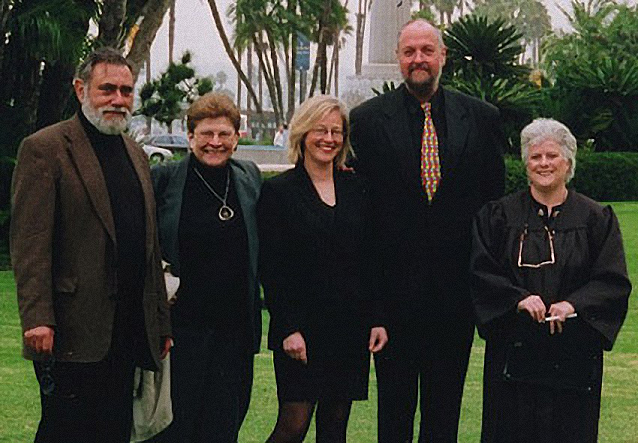
Thereafter, we took part in the activities of the Center for the Study of the Force Majeure, joined the board of directors, and founded a European branch of the center.
Most recently, we are involved in the development of Sensorium: The Voice of the Ocean, the last project initiated by Newton.
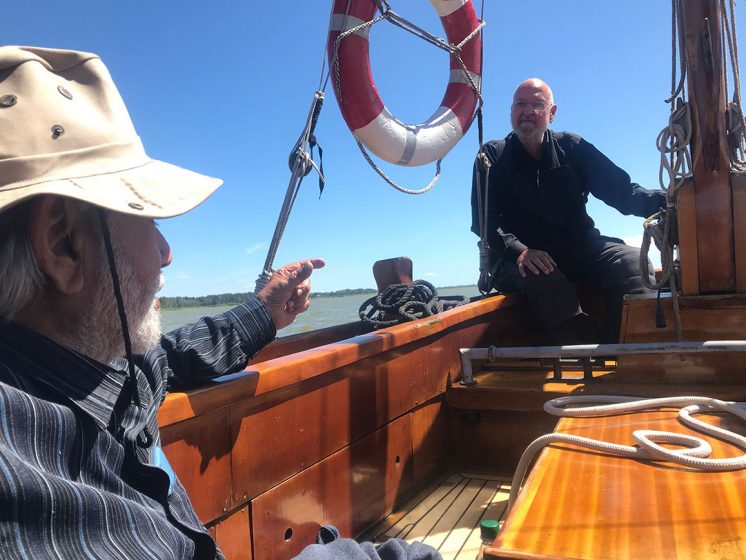
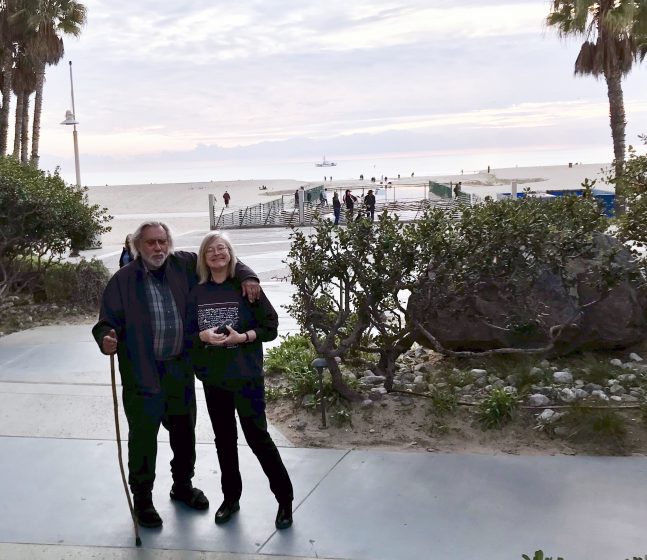
I, Petra, had the pleasure to meet Helen and Newton in 1994, when they designed ― together with their son Gabriel Harrison ― the initial Future Garden project Endangered Meadows of Europe.
The exhibition opened in 1996 on the rooftop of the Art and Exhibition Hall of the Federal Republic of Germany in Bonn. As a leading member of the museum’s team, I had the privilege to accompany the process of developing this highly complex project from the very beginning up to its realization and the successive projects that derived from it.
To me, this work seems programmatic for Helen’s and Newton’s systematic approach, and it opened my eyes to the complexity and understanding of ecological systems:
Since an increasing number of agricultural areas are being maximized with regard to productivity or turned into building sites, meadows are one of the most endangered biotopes. A 400-year-old meadow from the Eifel area, which would have otherwise been destroyed, was rolled up, transported to Bonn, and unrolled on the museum’s roof. Collectively, the meadow contained 164 species of plants, among them several from the red list of endangered species, where normally there would be 30 to 35.
The roof garden of the museum had been mowed twice a year so that hay and seeds could be harvested which were then applied to more than 10,000 square meters of a meadow area along the Rhine and other places in Bonn: A Mother Meadow for Bonn: Future Garden 2 was created.
Since then, the concept spread, and many Future Gardens of different kinds were and are still being established all over the world.
I, Kai, first met Petra at the Kunst- und Ausstellungshalle in Bonn, where she was deputy director and I curated an exhibition on Alexander von Humboldt, the great 19th-century holistic scholar. She introduced me to the Harrisons in 1999 when the project Peninsula Europe appeared on the horizon.
There was no time to think about the exhibition itself but the development of a catalogue concept seemed practicable and above all most challenging:
The works conceived by Helen and Newton had so many entirely different formats that they could not possibly be squeezed into one book with a defined size without losing their integrity and comprehensibility.
Consequently, we developed a publication which, at first glance, looked like a book but when opened up consisted completely of adjustable foldouts with an individual size for each work.
The Harrisons were enthusiastic, the bookbinder was not ― and the result was convincing.
So was my first encounter with Newton. A vague feeling of being interrogated soon faded into the notion of having found some kind of ‘brother in spirit’ while studying and contemplating Humboldt’s theories and their essence that “everything is interrelating”: A true holistic thinker considering the arts as important as the sciences for communicating the central issues of human interaction with nature.
Petra and I had both reached a point of cognition with former projects where we had purposely been seeking interdisciplinary advice, but never in such a consequent methodical way as the Harrisons did combining a diversity of disciplines with different knowledge, perspectives, and approaches to collaborate and actually provide the basis for perceptions and results which an isolated individual could not generate.
From the very first moment, the two of us met with Helen and Newton, we were convinced of their ways to work, and felt it to be very similar to the way we wanted ― and finally achieved ― to work:
The permanent dialogue between the two of them;
The ability to find advisors, scientists, politicians, and other collaborators or supporters and form and maintain a powerful team;
To start a discussion and continue it without an end in sight;
To integrate new information into an existing concept;
To change plans, if necessary, without losing the objective;
To be convinced of and devoted to this objective;
To remain open and curious;
To never say: It is not possible.
Thus, a mutually beneficial relationship between the four of us started, developed, and remained more than close ― as Newton put it: We were their friends, designers, editors, and thinkers.
Salma Arastu
about the writer
Salma Arastu
As a woman, artist, and mother, I work to create harmony by expressing the universality of humanity through paintings, sculpture, calligraphy and poetry. Inspired by the imagery, sculpture and writings of my Indian heritage and Islamic spirituality, I use my artistic voice to break down the barriers that divide to foster peace and understanding.
I hear his voice when I read Channeling the Lifeweb again and again. The words echo in my mind every day and night.
I met Newton in March 2021 through my friend Heidi Hardin who was a student of Helen Mayer Harrison and Newton Harrison at UC San Diego in the early 70s. I was working on my project ‘Our Earth: Embracing All Communities’ which was inspired by the ecological verses from Quran. I published the book and Heidi Hardin arranged a Zoom meeting presentation about my book and invited pioneer Eco Artist Newton Harrison. I felt honored and was very grateful to learn that he has agreed to attend the Zoom meeting! I thanked Heidi Hardin for this great opportunity to join in conversation with Newton Harrison in this important talk “Women and Web of Life“.
After that first introduction and hearing his encouraging comments, I emailed him my thanks and mailed a copy of my book too. He replied “Very interesting talking with you. I think you have an opportunity to engage your whole country using the Quran’s environmental positions to support your own or what you discover.” He shared his work, and we continued our communications through emails. He kept encouraging me by saying Female empathy and compassion must advance to save all life on Earth. He related an inspiring story of Helen’s compassion and dedication. He offered me to participate in the exhibition Eco-art Work: 11 Artists from 8 Countries at Various Small Fires in Los Angeles which was a great honor for me. I was given another honor to attend his surprise 89th birthday party on November 20th, 2021 with his close friends and that day I told him that I would like to visit him and meet in person. After that, he tried to schedule the time for my visit on March 24th, 2022 and, unfortunately, the cancer diagnosis happened, and the situation changed. I treasure his last email dated 5/17 when he sent me the image of his last work with these words:
“Thanks for your concern and good wishes. My treatments for the cancer have slowed me down. They are radioactive with added chemo. The course of treatment should end in about 2 1/2 weeks, and about 2 weeks after that I might be civil. Don’t want to lose contact. Very much hope things work out with your work and our gallery. Give me a call in about a month and I’ll see if I can’t make an afternoon with you. I am attaching a draft of my most recent work where I briefly become the voice of the Lifeweb, perhaps channeling in such a way that some of the stuff that I said surprised me after the fact.”
All the best, warm regards,
Newton
I hear his voice when I read Channeling the Lifeweb again and again. The words echo in my mind every day and night. My work after our meeting in March 2021 is totally impacted by his teaching. I have followed all projects executed by Helen and Newton Harrison, in particular through their book The Time of the Force Majeure.
I have found myself immersed in research to gain deeper knowledge in science and faith to find remedies to save our planet and its ecosystems. I have found underground network of mycelia that is regenerating, activating, and healing the damaged state of our environment and invisible tiny benefactors Microbes who are an integral and essential part of the web of life. Bridging Science and Faith creates a visual discourse that bridges science, religion, Islamic diversity and diaspora, language engaged with the plight of humanity, the soul, and the soil. Now my artworks juxtapose the ecological phenomena of interconnectedness through mycelial flow with concepts from the Quran as expressed through Arabic calligraphy and Islamic patterns. The new series mirror contemporary issues with possible solutions based on science and spirituality expressed through moving lyrical lines.
Aviva Rahmani
about the writer
Aviva Rahmani
Aviva Rahmani began pioneering ecological restoration as transdisciplinary artmaking in 1969. She authored, “Divining Chaos,” and co-authored, “Ecoart in Action” in 2020. Her “Blued Trees” (2015- present), focuses on how legal insights, expressed as art, can resist ecocide. Rahmani lives and works in Manhattan and Maine and is an Affiliate with the Institute for Arctic and Alpine Research, University of Colorado, Boulder. Her undergraduate and graduate work was at CalArts and her PhD is from the University of Plymouth, UK.
We had parallel interests across many years, but they understood far better, how to platform and establish visibility for those interests.
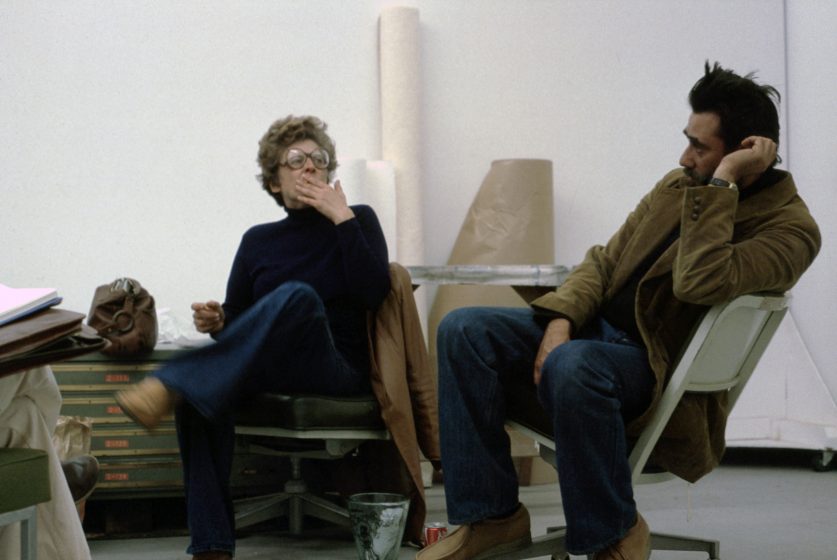
I think the practical strategies I was testing, for how far simple ideas might become models for reciprocity and collaborative change, intrigued and inspired Newton. They both helped my career at many crucial turning points. Helen gave me my first job in the UCSD Extension in the late sixties and early seventies. In 1969, Newton asked me to form an ill-fated Dance Department at UCSD. He was an ardent supporter, assembling Eleanor and David Antin, and Pauline Oliveros to promote the project until politics shot it down. Newton and I had a more extensive and complex relationship than I had with Helen. Early on in my career, Newton sent me to connect with seminal art figures, whose collegial interests have remained my aesthetic lodestones in the extended art family I inhabited long after they all passed away: the collector, Stanley Grinstein, Allan Kaprow, who gave me a job as his TA and scholarships at CalArts and remained my mentor till his death, and the legendary gallerist Ronald Feldman. In our sometimes-volatile friendship, I was slowly provoked to aggressively carve my place in the art world.
Newton had a sculptor’s eye for form, which Helen deepened into a poetic narrative, serving them brilliantly in gallery and museum settings to frame concepts. He had a shrewd businessperson’s gift of the gab to narrate compelling visions to donors who allowed him to advance groundbreaking ideas in the art world. This, partnered with Helen’s pragmatism and diplomacy, also enabled advances in policy circles in Europe and the UK. Newton, and in a more muted way, Helen blended fierce competitiveness and professional generosity. Newton was intensely interested in two works of mine, Synapse Reality (1970), which made a social sculptural experiment of a small farming commune in Del Mar, California, and Ghost Nets (1990-2000), which restored a degraded former coastal town dump to flourishing wetlands on Vinalhaven Island, Maine. In 1970, Newton taught a class at UCSD on Strategies, anticipating the need Joseph Beuys also foresaw by forming the Green Party, to engage artists in international environmental policy.
In 2022, after decades of participation in the eco-art dialog (1990-present), I had co-founded, Newton curated and arranged the group show, Eco-art Work: 11 Artists from 8 Countries at Various Small Fires in LA. His hope then was to catalyze a market for the burgeoning international eco-art genre which might carry on the hopes they both had to change the world with art. It was only then that Newton seemed to me to be acting on understanding that the change they sought could only come from a larger community in which they were a part but not the center. It was a project that reflected an understanding of how complex the human parts are that might fit together to save humanity from itself.
Helen Mayer Harrison and Newton Harrison
about the writer
Helen & Newton Harrison
Helen Mayer Harrison (1927-2018) and Newton Harrison (1927-2018) were artists that pioneered art and ecology, developing an approach that characterised them also as educators. In their artworks, the Harrisons collaborated with planners, scientists, and communities on bioregional scale projects addressing ecosystem health in the context of climate change and the need for adaptation. Helen brought a perspective from her deep knowledge of literature, psychology, and education. She had held senior roles in Higher Education before beginning to collaborate with Newton. He had studied visual art and was already an acclaimed artist before beginning to collaborate with Helen. Their life’s work wove together these different knowledges and experiences, generating a unique and appropriate aesthetic that addressed the wellbeing of the web of life.
From Peninsula Europe: The High Ground – Bringing Forth a New State of Mind 2002
Is Peninsula Europe at a bifurcation point?
At a point of change and self-transformation?
After all, from the Romans through the Middle Ages
through the Renaissance
the Enlightenment
from Modernity to the Now,
that territory we call Europe
has many times rebuilt its landscape
economically, politically, culturally.
It has rebuilt its belief systems
and rebuilt its ecosystems.
Now we imagine a new set of emergent properties
suggesting that this is indeed a bifurcation point in a state of
becoming
a point of reorganisation of its own complexities
into a new form of entityhood.
If so
Peninsula Europe becomes the center of a world.
Peninsula Europe moves towards entityhood
when its boundary conditions become
more permeable
to what it understands
as contributing to its wellbeing
and
less permeable
to what does not.
Peninsula Europe moves towards entityhood
when its discourse
can focus on the carrying capacity of its terrains
for industry, farming, fishing
information production
and cultural divergence.
Peninsula Europe moves towards entityhood
as it transforms its wastes
into that which is useful and valuable
while successively reducing the wastes
that are damaging to itself
and when
its organic waste disposal
becomes a vast topsoil regenerating system
insuring green farming
remodeling its food production systems
on natural systems.
Peninsula Europe moves towards entityhood
when its river systems, estuaries, ocean edges,
forests, wetlands, meadowlands, and eco-corridors
are valued sufficiently
and enabled to co-join
into a complex biodiverse life web
self-sustaining in nature
an eco-net of the whole
and its high ground, grassland, and forest communities
contribute ecological redundancy, continuity, and mass
at a continental scale.
Peninsula Europe moves towards entityhood
which its diversity of cultures is protected
and they are valued for themselves
and are encouraged to be seen as self-creating entities
adding improvisation and creativity
diversity and uniqueness to the cultural web.
Entityhood happens when each part feeds value to the whole
and the whole complicates itself
following the natural laws of self-organization
and creating a complex entity.
JoAnn Kuchera-Morin
about the writer
JoAnn Kuchera-Morin
Dr. JoAnn Kuchera-Morin Composer, Director, and Chief Scientist of the AlloSphere Research Facility, is Professor of Media Arts and Technology and Music at the University of California, Santa Barbara. Her research focuses on creative computational systems, multi-modal media content, and facilities design. She created and was Chief Scientist of Digital Media for the University of California.
What I have learned from the brief time of working with Newton and viewing the work that he and Helen have accomplished is the collaboration of two bio-eco artists who were interested in investigating the life web from true empirical inquiry and truthful interrogation, using their expert artistry and scientific inquiry.
In Newton’s own words, he wanted the Sensorium to become a “fully interactive 3-dimensional human-centered interface, where the floors, walls, and even the ceiling act as ‘live’ surfaces, connected to real-time data, information, and modeling/simulation tools. Newton wanted the Sensorium to have a series of functions including education and holistic decision-making, and to allow people to interact directly with the ocean through the interface. Most significantly, Newton wanted the Sensorium to operate as a generalized pre-emptive planning environment where oceanographic problems, mostly of human creation, can be seen and acted upon because their interconnectivity is understood at one glance and all together.” This is exactly what my research and creative practice entail. I am a composer/media artist working on complex systems research and have made a fully interactive/immersive instrument/laboratory called the AlloSphere and complex system software AlloLib that investigates multi-dimensional complex problems through visualization, sonification, and interaction, building immersive installations for artistic/scientific discovery.
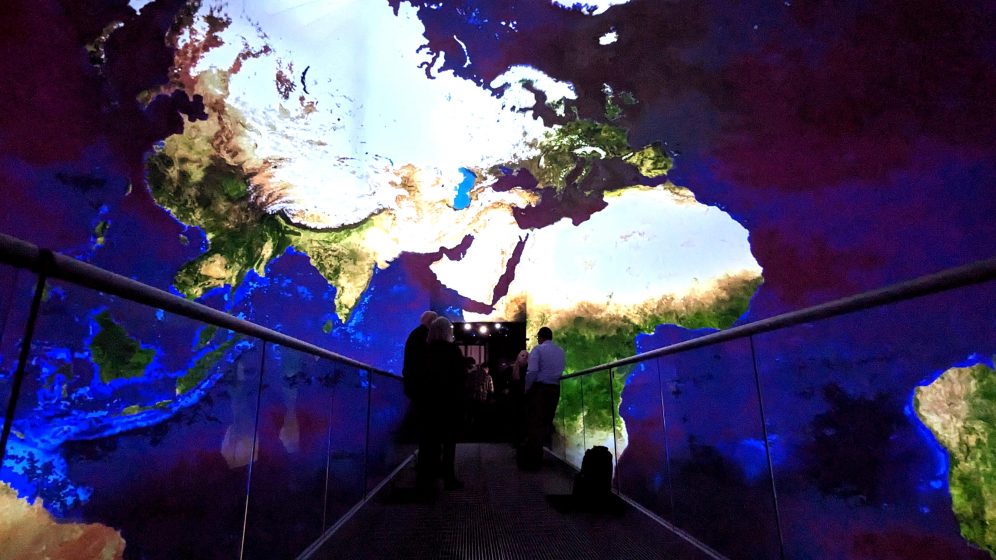
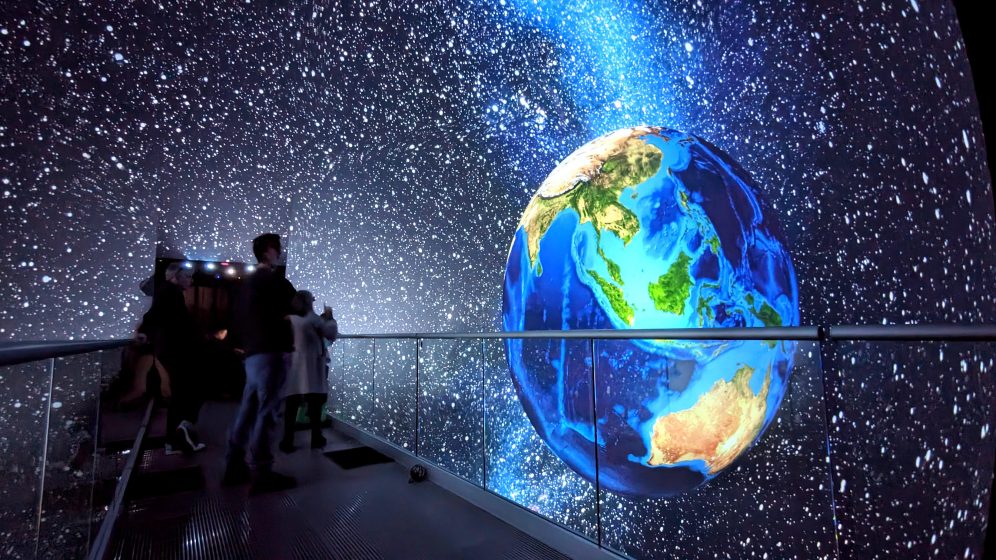
The AlloSphere instrument can be designed in any shape and size to accommodate any installation space, laboratory, or situation room, and the AlloLib software can scale accordingly from the AlloSphere current size of a three-story 2000 square foot lab that houses 26 projectors, 54 channels of sound, completely multi-user and interactive, to museum-size installations, the desktop, and immersive VR helmets.
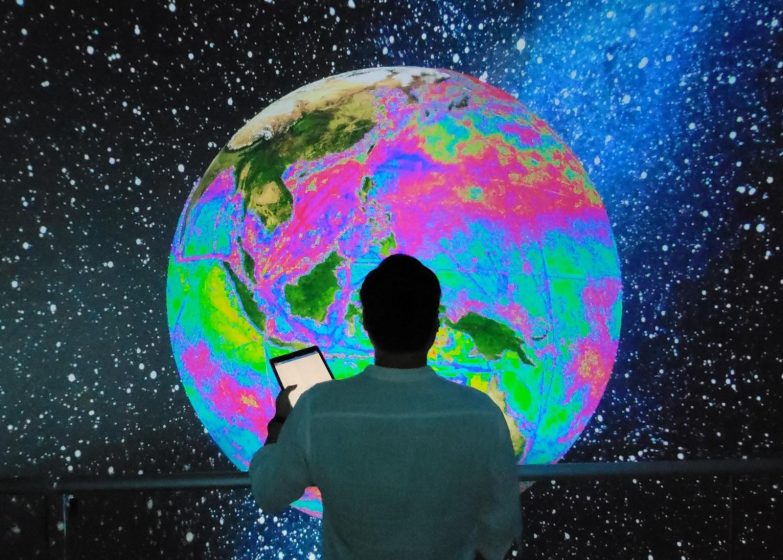
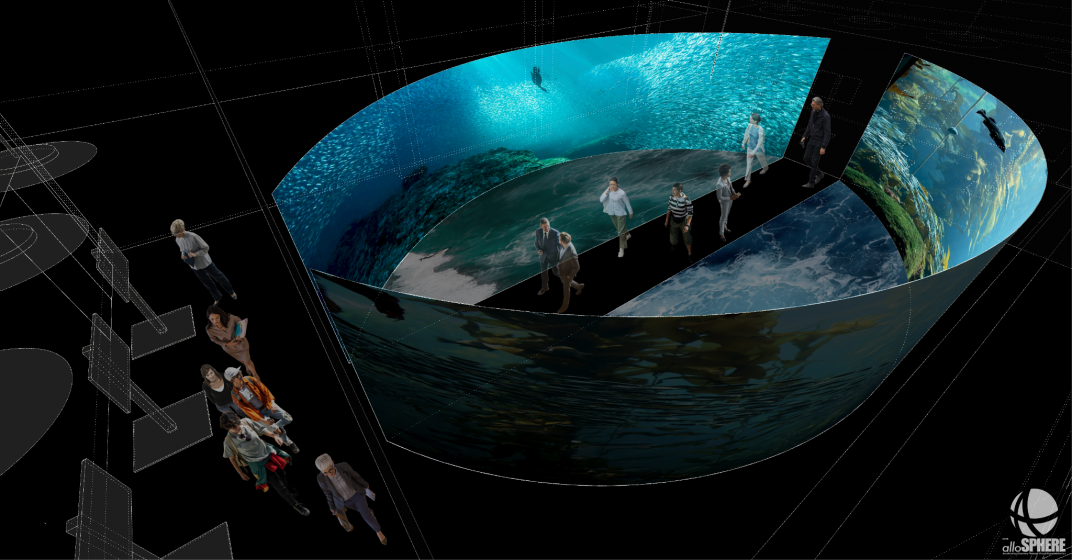
The AlloSphere instrument and Laboratory is located within the California NanoSystems Institute, where we work with physicists, chemists, biologists, and other scientists in visualizing, sonifiying, and using interactive computation to explore complex systems. My AlloSphere Research Group is now working closely with Newton’s organization, the Center for Study of the Force Majeure, to make a unique and compelling immersive installation for the Getty Pacific Standard Time (PST) 2024 initiative as well as taking this artistic/scientific research to the next level integrating experimental and simulation models into a laboratory dedicated to ocean world research.
What I have learned from the brief time of working with Newton and viewing the work that he and Helen have accomplished is the collaboration of two bio-eco artists who were interested in investigating the life web from true empirical inquiry and truthful interrogation, using their expert artistry and scientific inquiry. They viewed the system holistically and have paved the way for systems solving not just problem-solving.
I include the following media artists/researchers from my AlloSphere Research Group, who are currently working on the Sensorium for the World Ocean Project.
Some of the members of the AlloSphere Research Group:
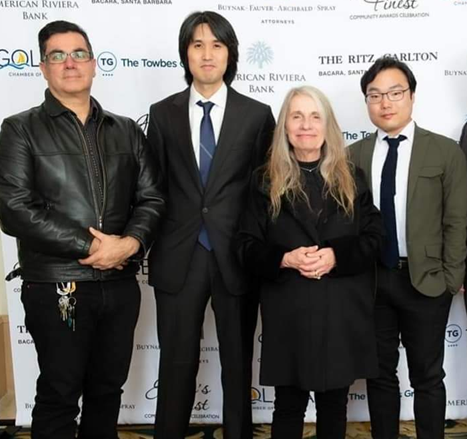
Dr. Kon Hyong Kim (is Post-Doctoral Researcher with the AlloSphere Research Group at the University of California, Santa Barbara. With a B.S. in Electrical & Computer Engineering from Cornell University and an M.S. and Ph.D. in Media Arts and Technology from UCSB, he focuses on generating various mixed reality environments and high dimensional mathematical artwork. He is the lead Graphics researcher on the Sensorium Project.
Myungin Lee is a Ph.D. candidate in the Graduate Program in Media Arts and Technology at the University of California, Santa Barbara. His research includes digital signal processing and visual/sonic machine learning for interactive computational design. He is one of the lead designers of the content of the Sensorium Project working with the Ocean Health Index database of ocean scientist Dr. Ben Halpern at UCSB.
Dr. Gustavo Rincon Ph.D. Media Arts and Technology, M.Arch UCLA, MFA, CalArts) is a media artist, sculptor, and graphics immersive artist. His research focuses on spatiotemporal architectures and structures, extending from the virtual to the material. As a member of the AlloSphere Research Group his research focuses on shaping spatial structures through self-organizing algorithms. He is the lead in architectural design in the Sensorium project.
Dr. Timothy Wood is Research Director at the Center for Research and Electronic Arts at UCSB and AlloSphere Media Systems Engineer. His research looks at new ways of utilizing human computer interactivity, virtual worlds, and somatic movement practices to deepen and empower our relationship to the body and nature. Dr. Wood received his M.S and Ph.D. in Media Arts and Technology and was a Post-Doctoral Researcher at University of California, San Diego. Dr. Wood is working on human computer interaction for the Sensorium Project.
Dennis Adderton is the Technical Director of the AlloSphere Research Facility and works with Dr. Kon Kim, Dr. Wood, and Myungin Lee on hardware systems design.
Tatiana Sizonenko
about the writer
Tatiana Sizonenko
Tatiana Sizonenko is an art historian and award-winning curator working across the Renaissance, Modern, and Contemporary periods. She received her Ph.D. in Renaissance art history from the Visual Arts Department at UC San Diego while also developing expertise in contemporary art. Ms. Sizonenko currently serves as the project curator for Helen and Newton Harrison: California Work at the La Jolla Historical Society, a project funded by Getty Foundation’s Pacific Standard Time, Art + Science 2024.
Newton’s impact, along with Helen’s, on the field of environmental art practice and research, and socially engaged art more generally, is incalculable.
I am the curator of the exhibition Helen and Newton Harrison: California Work, organized by La Jolla Historical Society and funded by the Getty Foundation’s Pacific Standard Time Art + Science 2024. This exhibition will explore the juncture between art and science, art and ecology, and art and social activism in the work of Helen Mayer and Newton Harrison and will be displayed in four locations around San Diego simultaneously: La Jolla Historical Society (organizer), California Center for the Arts in Escondido, San Diego Central Library Art Gallery in downtown, and Mandeville Art Gallery at UC San Diego.
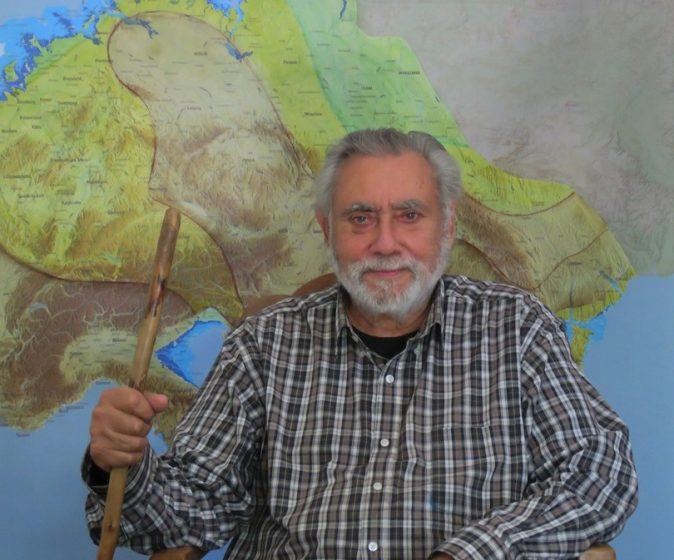
I met Helen and Newton in 2015, at the Scripps Institute of Oceanography, during the lecture-presentation on their recent Force Majeure projects. My collaboration with Newton started two years later when I first invited him to participate in the Agency of Art exhibition at the historical Mandeville Gallery of Art at UC San Diego. This exhibition highlighted Newton’s role as the founding member of the Visual Arts Department and the Harrisons’ impact on the multi-disciplinary art practice in the Visual Arts program. The Agency of Art juxtaposed the Harrisons’ Peninsula Europe (2000-7) with works of younger artists from the program. Starting as an assistant professor of painting in 1967 at UCSD, Newton would soon completely change direction and embark on making ecological art in the early 1970s in collaboration with his wife Helen. They then collectively made the decision to do no work that did not benefit ecosystems. During his time at UCSD, Newton was a hugely influential teacher and advisor, mentoring artists such as Martha Rosler and Alan Sekula among many others. He also influenced generations of environmental artists and scholars such as Lauren Bon, Tim Collins, Reiko Goto, Ruth Wallen, and many others. His impact, along with Helen’s, on the field of environmental art practice and research, and socially engaged art more generally, is incalculable. Peninsula Europe was chosen to feature the Harrisons’ approach to visual art as complex objects designed to reframe and re-imagine the critical problems of the environment and society today, and so to improve the world and our interactions with it and one another.
Retiring from UCSD in 1993, the Harrisons never stopped working on ecological art projects. In 2009, Newton and Helen, as research professors, founded the Center for the Study of the Force Majeure at UC Santa Cruz’s Digital Arts and New Media Program. After Helen’s death in 2018, Newton continued to work until the last moment of his life. Just two weeks before his passing away, I visited his studio to make final selections of work for this next exhibition. Span across four venues and over the fifty years of their collaboration, 1968-2018, Helen and Newton Harrison: California Work will offer a critical reappraisal of the California-based works and will highlight the Harrisons’ approach to art and ecology often guided by the question “How big is here?” Working with Newton on California Work since 2019, I also encountered in practice their other main guiding principle for making art and establishing a truly ecological society that can be summarized as “listening to the Web of Life.”
The Harrisons proposed to use complex system thinking to treat nature as self-complicating, self-renewing, and self-continuing, a living partner to humans—thus the Web of Life. In our conversations, Newton emphasized that transformative thinking is exciting and works of art can change the world for the better, not just by enriching the life and spirit of those who love it but by proposing new solutions to problems revealed through an artist’s way of seeing combined with science, engineering, and social critique. The Harrisons’ commitment to the Web of Life, which they labelled, rather bluntly, a “Dictatorship of the Ecology,” led them to produce works of art that could act as just such social agents to reshape the world in which we live.
The Harrisons’ intention and guiding presence for listening to the Web of Life will be terribly missed. California Work intends to highlight how the Harrisons used the exhibition format in several ways, often in the sense of a town meeting, but always with the intention of seeing their proposals moving off the walls into planning processes, and ultimately resulting in interventions directed towards social and environmental justice.
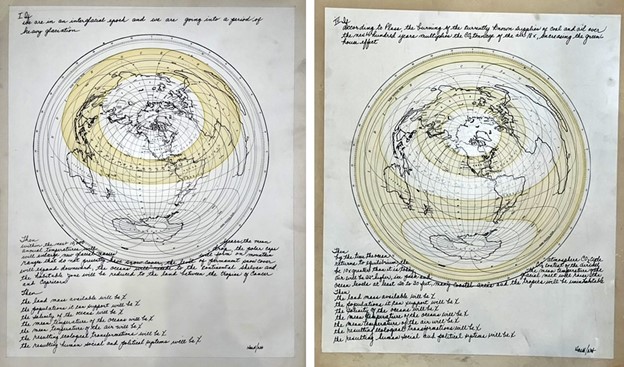
Courtesy of the Harrison Family Trust
Mali Wu
about the writer
Mali Wu
Mali Wu is a socially engaged Taiwanese curator, installation and conceptual artist. She is a professor at the Graduate Institute of Transdisciplinary Art at the National Kaohsiung Normal University (NKNU), Taiwan.
The Harrisons demonstrated how we could apply wisdom to allow species to coexist and prosper. This is what we should learn anew, and that art can contribute to.
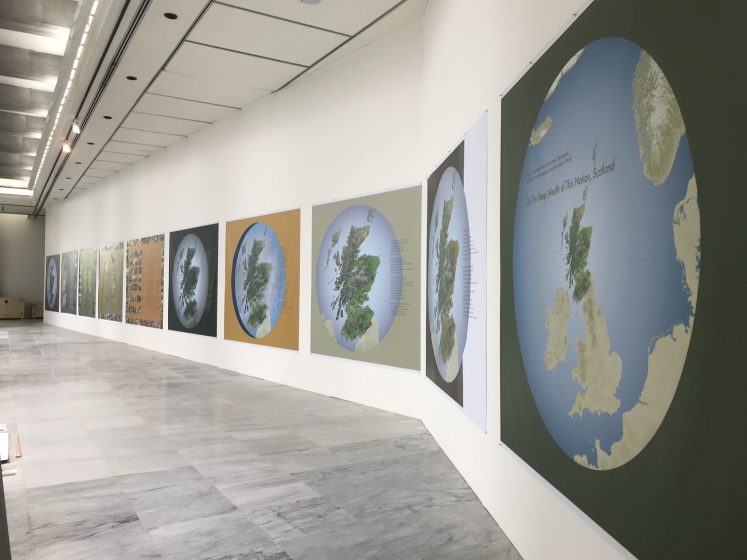
The 2018 Taipei Biennale presented On the Deep Wealth of this Nation, Scotland. One can see Harrisons’ consistent working methods. Through the research, cooperation, and dialogues with experts from different fields, to comprehensively understand the natural resources of a place, then, based on the needs of the developments, and from the perspective of environmental ethics, they provide suggestions for the adjustment of the land use and planning.
This creative method that is both scientific and rational, but also full of ecological care and connective aesthetics is different from the traditional way we used to regard art simply as perceptual expression and object production. Through art, they propose a more integrated, cartographic perspective, trying to reverse the way we build the world. This way of creation not only presents images of an ideal world but also uses art as an intervention, expanding our understanding of art. In “Post-Nature”, many works pointed out the difficulties and challenges faced by the contemporary world but the Harrisons demonstrated how we could apply wisdom to allow species to coexist and prosper. This is what we should learn anew, and that art can contribute to.
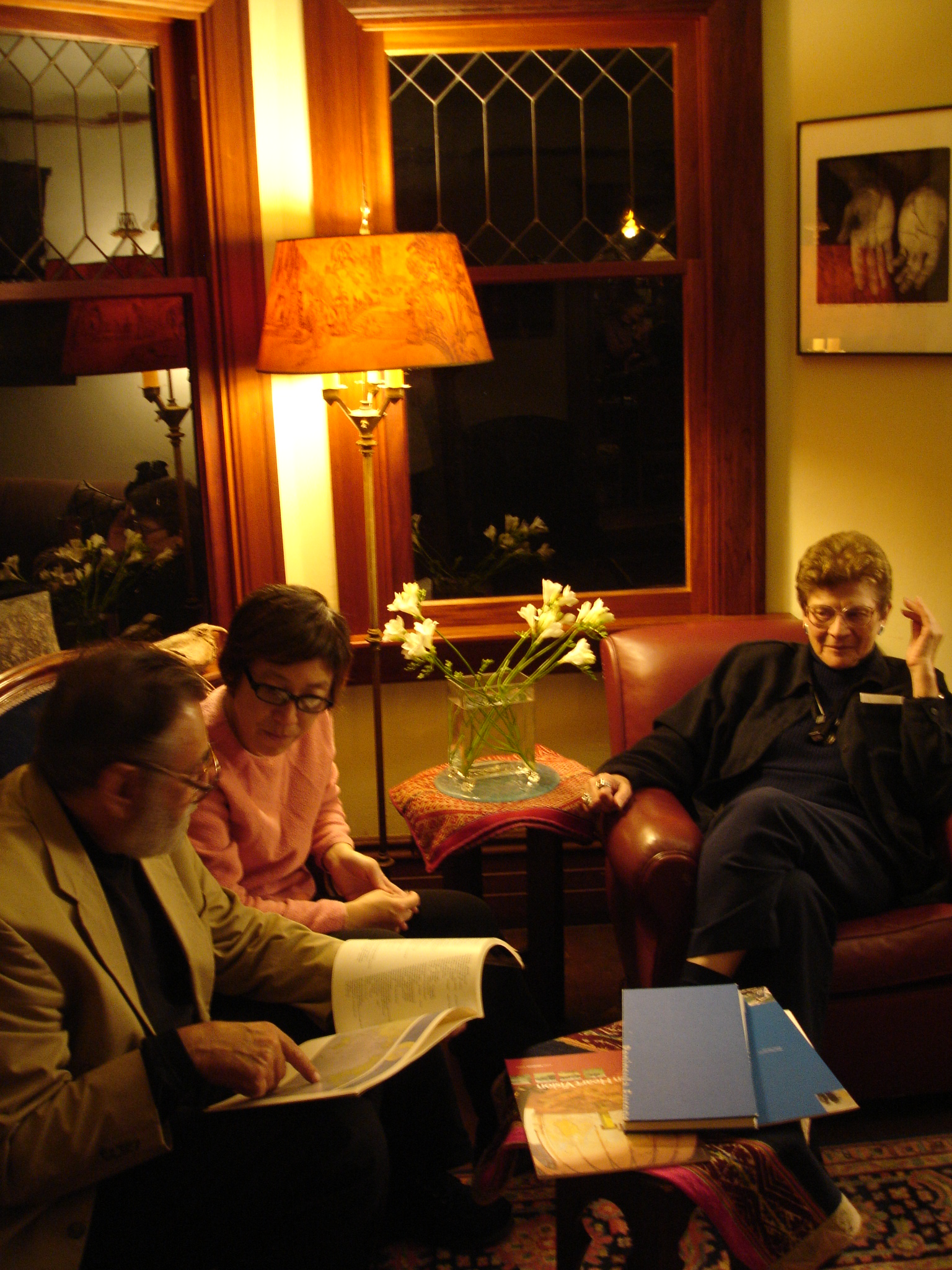
I knew the works of Harrisons from the development of land art, and thanks to the arrangement of Suzanne Lacy I visited San Francisco in 2005 and met many eco-conscious artists from the West Coast of the United States at the house of Susan Leibovitz Steinman. Artists, including founding members of the Women Eco Artists Dialog (WEAD) and Harrisons et al. It was only then that I realized that these artists paid attention to how art, especially ecological art, can respond to real-world issues, rather than simply seeing art as an expression of opinion. Inspired by this, in 2006, I developed an art project By the River, on the River, of the River – a community-based eco-art project, inviting ecological experts, cultural workers, and community colleges to collaborate with and have public discussions.
In 2007, with the help of David Haley, Helen, and Newton were invited by the Taipei Cultural Foundation to give a lecture and exhibit documents of their projects at Taipei International Artists Village. At the same time, they were also invited to Dapu Township, Chiayi County, where the Zengwen Reservoir, the most important water source in southern Taiwan, is located, to conduct a two-day’s Master Workshop. Through the detailed explanation of their projects over the years and the recitation of the poems they created, we could better understand their extremely cross-discipline, integral, educational, dialogical, and poetic methodologies. And these events have brought significant impact and inspirational approaches for Taiwan in the field of contemporary/ecological/public art.
Today, because the climate emergency is being taken seriously, more and more artists in Taiwan are devoting themselves to environmental art. There is no doubt that the Harrisons have set a benchmark for us.
Richard Sharland
about the writer
Richard Sharland
Richard Sharland has worked as an artist, community worker and environmental leader in the U.K. since 1975. Manager, Derby Community Arts ( 1982 – 1985), Director of Lancashire Wildlife Trust (1985 -1994), Director Groundwork St Helens (1994 -1999), National Director then COO at Groundwork U.K. (1999 – 2009), Director, Climate Change Planning, Manchester City Council (2009 – 2013) , Director, Terre Verte Gallery (2015 – current )
Both Helen and Newton had this wonderful gift of memory for stories and information and ideas, which they drew upon to evolve their work, to help others to evolve.
I first met Helen and Newton Harrison towards the end of the last century when they created a piece of work for the Art Transpennine exhibition in Manchester/Liverpool/Leeds/Hull. At that time, I was leading a local environmental organisation focused on ecology, wildlife conservation, and climate change: my background as an artist and community development worker informed an approach to my work that was open to innovation and prioritised engaging people and organisations in different ways. I worked with Art Transpennine as a local environmental leader and was part of Helen and Newton’s relationship networking on their project; subsequently, I met up with them when they were working on one or two other projects in the U.K. and in Aachen.
During one of our first encounters, Newton and Helen and I talked about the difference between ‘discussion’ and ‘dialogue’, and I was warmly reminded of the value of open-ended relating, of taking journeys of ideas whose destination is unknown. I say ‘reminded’ because I was already familiar with this from my youth, particularly from my childhood, but it was not the kind of conversation I had often in my workplace, where ‘adult conversations’ were often linear and closed, rather than open, enquiring and wondering.
“We don’t do discussion. We do dialogue ― you know, from the Greek.” I remember Newton saying, as we conversed. Discussions tend to be narrow and linear, they travel toward a conclusion, something fixed that has been determined as the conversation is begun; dialogue, on the other hand, can evolve in a more organic way and often travels to topics and views not envisaged at the outset. As I began to get to know them, I noticed how much Newton and Helen lived their lives and made their work with this approach, always evolving. There was always this creative interplay around them, in how they related ― to each other, to people in conversation, when talking about their work, when doing and being their work. It seemed to me that this made their art not just a response to a place in the world but also manifestly a living extension of themselves, somehow inseparable from them, and thus always itself unfixed, still growing.
So, when I am asked, “what did you learn from the Harrisons?” I first think of this, this way of being, and of connectedness. For me, this lay at the heart of them and their work. It is something fundamental to ecology, that everything somehow relates to everything else, but it often gets forgotten … even though it is ‘the big picture’. Helen and Newton lived alongside and amongst a lot of linear thinking, as we all do, yet they evolved a way of working and being that manifested ecological thinking, that always ventured into the big picture. And that way of being and working seemed to suffuse their approach to everything, particularly their work, the way it evolved, and the way it related to people. I am still learning from that.
Their northern England project of that time – Can it be we are seeing a Dragon? ― was rooted in four large wall maps of the region, each adapted to explore aspects of a more sustainable ecological future. I recall inviting a group of environmentally minded town planners in the region to the studio space where the maps were exhibited to meet Helen and Newton. Newton suggested to them that they were artists just like him, but that his mapping was steered by possibility and an imagination shaped by understanding the limits and opportunities of the ecology of the area, while their mapping was steered by the abstract requirements of policymakers or politicians. In the dialogue that ensued, the planners were surprised and intrigued that these artists from California had much more data about the unsustainability of human life in northern England at their fingertips than they did.
Both Helen and Newton had this wonderful gift of memory for stories and information and ideas, which they drew upon to evolve their work, to help others to evolve. It isn’t something we can all be as gifted in, but the encounter with the planners wasn’t the only one which illustrated their preparedness, their presence. It is something captured by a line from Dylan’s song ‘A Hard Rain’s Gonna Fall’ ― “know your song well, before you start singing”.
Yangkura
about the writer
Yangkura
After I encountered Harrison Studio’s works, I was able to redefine my works with an omnidirectional view. And I learned that I must be in a position where I can communicate and collaborate with various types of people who have similar thoughts and integrate them.
Compared with my studies, which are about the ecological society of the area around the Korean Peninsula where I live, the Harrisons Studio’s ecological society has presented enormous research and scientific information over a considerable amount of time and an incomparably broader perspective.
There are so many people who do research, act, and study for the future environment and ecology. However, the target point of all of them is different and this makes for gaps.
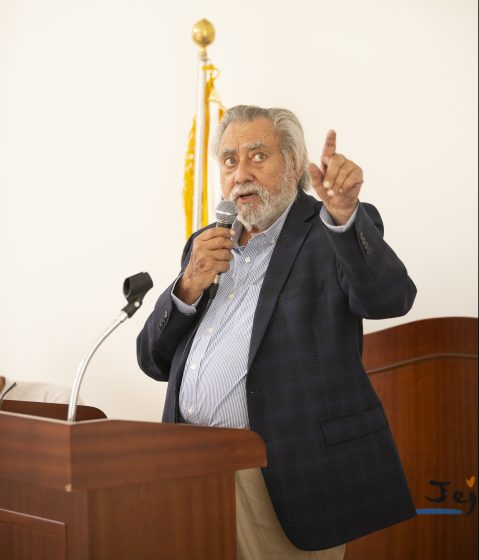
For example, some say that trees should be planted for the future, while others say that rescuing dying animals and extinct creatures is more important. We know both are important, but this gap sometimes causes significant friction. I think this friction is because of their situations: they are surrounded by limited budgets and time. In other words, the various kind of limitation seems to make friction. So, I feel it’s quite hard to reach the common ideal goals.
Me, as an artist who deals with environment and ecology, which point should I look at? Where should I stand?
After I encountered Harrison Studio’s works, I was able to redefine my works with an omnidirectional view. And I learned that I must be in a position where I can communicate and collaborate with various types of people who have similar thoughts and integrate them.
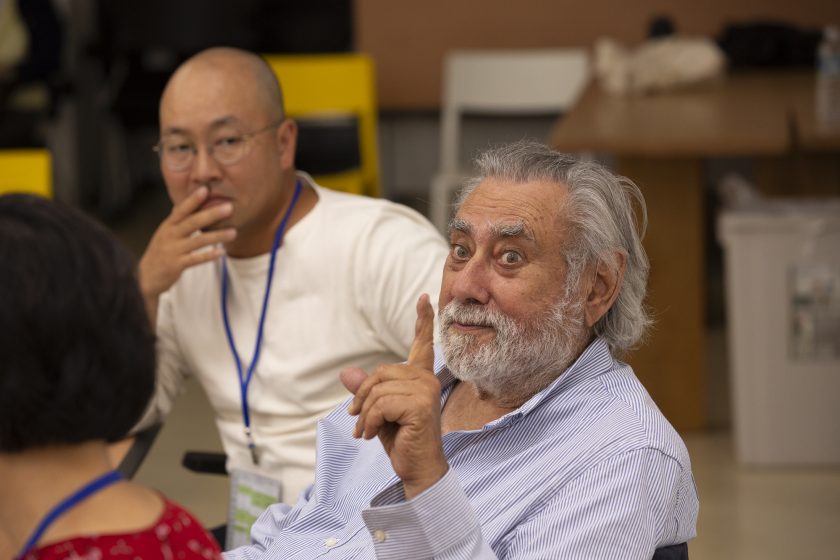
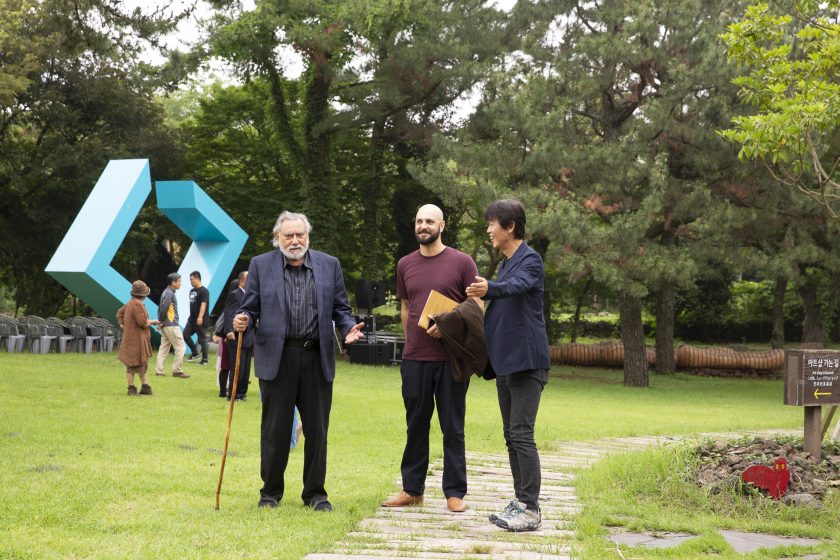
I want to share a story that is still inspiring me.
The first time I met Newton Harrison was in 2019 at the Museum of Contemporary Art in Jeju Island, South Korea. I invited Newton Harrison to the exhibition that I curated about ocean environments.
After our successful exhibition opening, we had a tea break and conversation while we were on the way to the airport. It was not a long break. But, in that short time, Newton Harrison and I shared a very romantic story and I think this was the most important story that Newton could tell me as a senior artist.
It was the story of the first meeting between Newton and Helen. How the love began—the first feelings—Newton said that he felt 100% sure of love when he first met Helen. And he told me about both the good and hard times of living together as artists.
There were good times when they were spotlighted and invited to a lot of exhibitions. There were also hard times, of course, when there was no work at all. With all these times, being without consciousness of the outside world is important. This was possible because of being with Helen.
Although this was a very brief conversation, I felt that Newton Harrison had very happy and beautiful memories of his longing for Helen and all the things he’d had with her.
This short conversation at that time became the most important message for me, who was struggling with irregular anxiety while living life as an artist. The most important thing is love which is with a soul mate and Newton proved this. I want to live sincerely and faithfully like Newton Harrison’s words and actions.
Barbara Benish
about the writer
Barbara Benish
Barbara Benish is a California-born artist, who moved from Los Angeles to Prague in 1992 as a Fulbright scholar. She founded ArtMill (est.2004) in rural Bohemia, an international eco-art center. From 2010-2015 she served as Advisor for U.N.E.P. in Arts & Outreach, and since 2015 is a Fellow at the Social Practice Arts Research Center, (University of California, Santa Cruz).
Their understanding of the consequences of ‘framing’, of giving humans a vision of the earth’s crisis in a way that is not catastrophic but regenerative, was the Harrison’s gift to us.
Helen and Newton arrived at the University of California, Santa Cruz, in 2009, the same time I did. When the mandatory faculty luncheon serendipitously had us seated next to one another on that warm fall day, overlooking the Monterey Bay, I felt elated to re-meet the pioneers of environmental art, surprised to find them in Northern California. It was an auspicious meeting, as I started a six-month Artist-in-Residence and teaching position at UCSC. We would become friends during that period, sharing Czech meals, (after learning of Helen’s Czech roots), but mainly talking about plants, rivers, maps, and things of the earth and sea. The Harrison’s were always willing to come to speak in my classes, generous with their time, and anxious to connect to the younger generation who would inherit the earth. They were natural teachers, both in and out of the classroom.
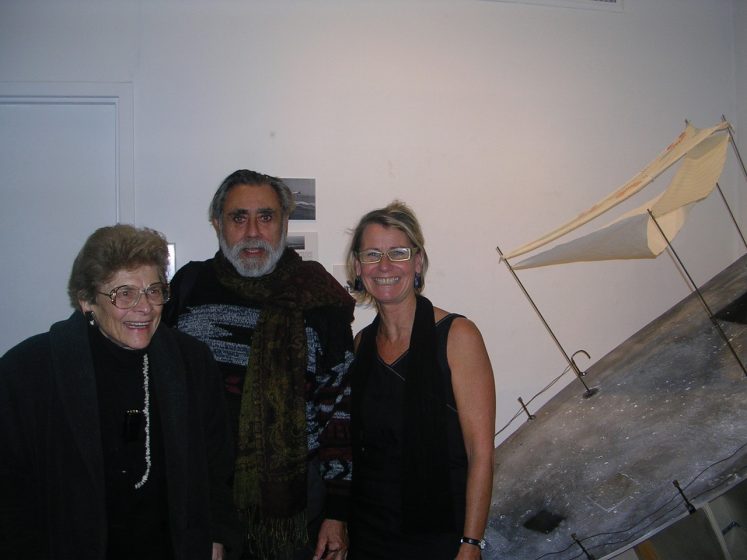
Their understanding of the consequences of ‘framing’, of giving humans a vision of the earth’s crisis in a way that is not catastrophic but regenerative, was the Harrison’s gift to us. Keenly aware of the connections of western capitalistic extraction, loss of natural resources, and culture, they kept the dialogue poetic and not didactic. During the times of Newton’s occasional amnesia towards female autonomy or ‘otherness’ in the room, Helen would gently, or forcefully, pull him back in. They were not a duet, but created a symphony between them, with their deep love and understanding of the natural world that was contagious.
Newton came to Prague at the invitation of our organization, ArtDialog, to lecture to several rapt audiences in 2019. We’d shown the Harrison’s work at our space, ArtMill in the Czech Republic, taught it in my lectures at the University, and skyped him in for Q and A’s over the years. He connected with my eldest daughter, Gabriela, who is now running our NGO, and listened to him talk since she was 13 years old. Over the past two years, ArtMill has been hoping to expand the Future Gardens project for Central Europe, working closely with Josh Harrison and the Center for the Force Majeure. Fittingly, the next generation will realize that dream.
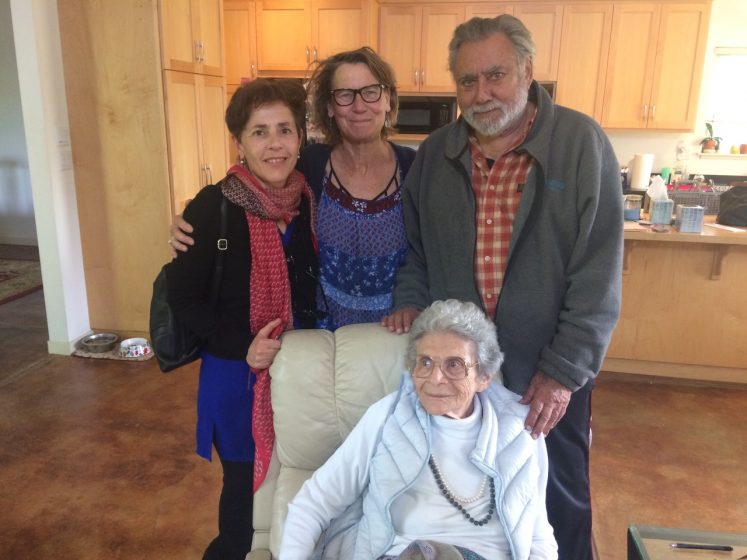
The last visit with Newton, was on his porch in Santa Cruz, California, not far from our home here. It was summer and we were discussing our upcoming show at VSF in Los Angeles which he was curating. He would show his ‘obituary’ piece, an image of which he printed out on his xerox machine to show anyone stopping in. He knew he was dying, and yet still liked a good joke. When he called me to come over on the phone, he said “and bring me some of your cheesecake” (a forbidden treat due to his diabetes). When we talked about the plans for Future Gardens of Central Europe, which he originally wanted to name after Helen (Helenovice, “Helen’s Village”), home of her ancestors, he raised his hand for me to be quiet. “I’ll consult with the Life Web” …. and he closed his eyes. We were silent for many minutes, and it seemed the yarrow in the front yard was breathing with us. “Yes,” he smiled when he opened his twinkling eyes, “it will be good”.
Brandon Ballengée
about the writer
Brandon Ballengée
Brandon Ballengée (American, born 1974) is a visual artist, biologist, and environmental educator based in Louisiana. Ballengée creates transdisciplinary artworks inspired from his ecological field and laboratory research. Since 1996, a central investigation focus has been the occurrence of developmental deformities and population declines among amphibians and other ectothermic vertebrates.
They encouraged me for decades to continue, to go deeper into the research and ask the question ‘how big is here?’, then to follow fearlessly what I discovered.
Helen and Newton inspired me to open my mind to the possibilities of art moving beyond objects and ideas toward concrete actions that benefit communities ― ecological, biological, and social, and that connection of their special way of viewing challenges with systems thinking.
They also encouraged me for decades to continue, to go deeper into the research and ask the question ‘how big is here?’, then to follow fearlessly what I discovered. Along these lines, Newton encouraged the creation of Atelier de la Nature. Here in 2017, my wife, children, and I purchased heavily farmed land in rural Louisiana. Since this time, we have worked to regenerate the ecosystems from soybean and cane sugar fields into a nature reserve and eco-campus.
As a component of the restoration, Newton along with soil scientist Dr. Anna Paltseva have started a living artwork called Memory in the Life of a Cajun Prairie with the planting of 2.5 acres of native Louisiana “Cajun Prairie”. This type of prairie ecosystem is found nowhere else in the world and is considered an “endangered” habitat with less than 150 intact acres remaining today.
Memory in the Life of a Cajun Prairie is a living artwork that poses three questions. Is Cajun Prairie an effective means of sequestering carbon? As recent studies have shown prairie grasses work better than trees to sequester and store carbon in the soil. How do different types of disturbances affect biodiversity? There is a body of evidence that grazing and annual burning may change species interaction and diversity. Through this kind of collaborative art and science project, can we increase awareness? Can we inspire larger-scale Cajun Prairie habitat restoration?
Memory in the Life of a Cajun Prairie came about through discussions between Newton and me, and our desire to work together on something at the Atelier de la Nature. Between 2017 and 2021, the soil for Memory in the Life of a Cajun Prairie began to be worked by rebuilding topsoil and removal of nonnative species. In February 2022, we seeded over a dozen native prairie plants and took soil samples to record pre-prairie carbon levels. Over the next nine years, the plots of Memory in the Life of a Cajun Prairie will be experimented with by reseeding, carrying out various disturbances to monitor species diversity, and recording the effectivity of carbon sequestering.
Helen and Newton’s ideas will continue to bloom through Memory in the Life of a Cajun Prairie as well as in all of us they inspired so much.
Ranil Senanayake
about the writer
Ranil Senanayake
Ranil Senanayake is a Systems Ecologist trained at U.C. Davis, He has developed Analog Forestry as a rural response to the critical need of restoring the worlds lost forests functions. He has served as Executive Director of the Environmental Liaison Center International in Nairobi, Kenya and as the Senior Scientist for Counterpart international, Washington D.C.
From creating a lagoon in a tank with Helen and Newton, I moved on to create a forest in a garden.
I began my relationship with Newt and Helen in 1972 while I was an undergraduate at Berkeley, my first time in America. My name had been given to them as an aquarist and they invited me to San Diego. That meeting led to a multi-year relationship much of it captured in their work The Lagoon Cycle. I moved from lagoons to rice fields to forests and today look at the Global Commons as the widest canvas.
Extracts From: The Lagoon Cycle’ – Helen Mayer Harrison/ Newton Harrison 1985
From The First Lagoon –
Lagoon Maker and Witness
He said
he knew of a creature a crab
and supposed that it could live under
museum conditions…
He said
he was from Sri Lanka
where the estuaries the lagoons and the ocean
are amongst the richest in the world
and if you want to know about lagoons
you should go there and see themFrom The Second Lagoon – Sea Grant
It was August
The first shipment of crabs arrived from the marketplace in
Colombo….…… Those we ate were delicious, those we
experimented with were hardyThe Third Lagoon – The House of Crabs
(of human behaviour)
While he expected the information gained to be privileged
as he expected the information gained to become profit
and we expected the information gained to become public
as we expected the information gained to be public
and he hoped the crabs would behave more reasonably
from his point of view
which they did not
and as he hoped that we would behave more reasonably
from his point of view
which we did not
and as we hoped he would behave more reasonably
from our point of view
which he did not
the lagoon developed a life of its own
about which we knew nothing at allThe Seventh Lagoon – The Ring of Fire, The Ring of water
Sometimes I dream of the water buffalo
in its wallow in Sri Lanka
the one that ran afoul of the gasoline engine
and is being replaced by the tractor
Now that the tractor does not replicate itself freely
nor provide milk nor utilize the weeds as fuel
nor produce fertilizer and fuel with its dung…
though the tractor is not graceful on the land
and the buffalo will yield to that tractor
although the buffalo
finally
is more efficient
and its dialogue with the land
more lucidClearly there is something about
technology that does not like that
which is not itselfYet this is not
a necessary condition
this unfriendliness
to the land
From creating a lagoon in a tank with Helen and Newton, I moved on to create a forest in a garden where the structure and function of the original forest were used to design for restoration. Analog forestry is the methodology with which to design forest-like human ecosystems that provide the functions that the forest once did.
Looking at forest function, it soon became evident that the entire structure was fundamentally dependent on Primary Ecosystem Services provided by the photosynthetic biomass (leaves) of plants. This is the primary act of life, the Force Majeure, if you may. Meeting Newton again in South Korea; this was serendipitous, I designed a project entailing ‘seed clouds’ from the South to the North with the autumn winds was designed for the DMZ. Because wind is an irresistible force, beyond the control of a state. These ideas have progressed to ‘smart contracts’ to valorize PES into the Global Commons.
The Global Commons, as we discussed so often, was the stage for the Force Majure ignoring it was a reason for the ecological collapse today. In our work, to create value and restore the commons, a new value system to power Biocurrency, driven by the living world (www.restore.earth) is now being generated.
Reiko Goto Collins
about the writer
Reiko Goto Collins
Goto employs an experimental practice of empathic exchange with people, places, and things. She earned her PhD in Ecology and Environmental Art in Public Places in 2012. Collins is driven by the pursuit of transformative experiences and ideas that can empower people, places and things. He received his PhD in Art, Ecology, and Planning in 2007.
Through this conversation I have learned three things: 1) metaphor can be physical, 2) physical metaphor can be dysfunctional, and 3) a metaphorical flip informs how we understand a functional metaphor.
Helen Harrison: Our normative cultural behaviour, and then you see if there is some way that you can reverse it. When people see the flip, and the reverse, they understand.
Newton Harrison: Let me give you an example. Flood control is a metaphor. Now, what is flood control? Flood control is defined by dams and dikes that hold the river, keep it from flooding and wrecking a town. But the dikes also destroy the river.
Helen Harrison: Flood control is also the destruction of flood plains. Flood plains are meant to be flooding.
Newton Harrison: And the destruction of river life – a lot of destruction in that metaphor. If you flip the metaphor, flood control is the spreading of waters – then you give me the twenty million dollars that you were going to put in the dikes; I will go and buy land above; and a whole load of design will happen which we call ecological design.
Helen Harrison: We will return the flood plain to the river. We will have removed …
Newton Harrison: Reiko is not understanding how one got to begin at the beginning again.
Reiko Goto: Hey, dikes are not metaphor – they are real structures!
(Goto Collins, 2012, p.70).
Through this conversation I have learned three things: 1) metaphor can be physical, 2) physical metaphor can be dysfunctional, and 3) a metaphorical flip informs how we understand a functional metaphor. A metaphorical ‘flip’ is like ‘light and shadow’, ‘pull and resistance’, and ‘joy and sorrow’. It reveals or creates a dual reality.
A dual reality is not imagination, it is also found in the natural environment. For example, Caledonian pine, known as Scots pine (Pinus sylvestris), grows differently in different environments. In forest plantations the competition makes them grow tall and straight.
In open areas, the branches spread out to catch more sunlight.
Both natural events and human actions affect the shape of the tree. The dual reality of the pine tree has two different values: straight-utilitarian value and curvilinear-aesthetic value. Understanding two different values of Caledonian pine can give us choices in how we relate with the tree.
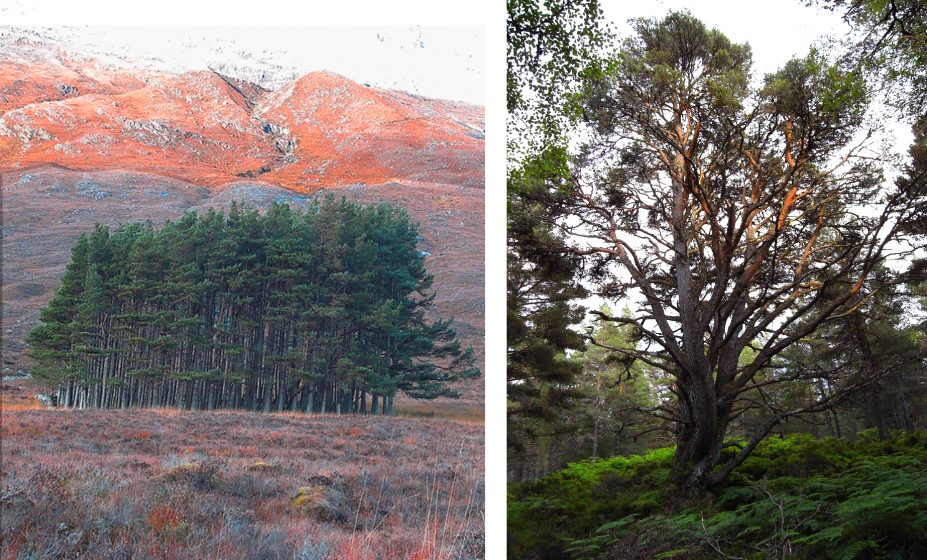
Image right: A Caledonian pine in Black Wood of Rannoch, Scotland. Digital image: Collins + Goto Studio, 2013.
Helen Mayer Harrison and Newton Harrison
about the writer
Helen & Newton Harrison
Helen Mayer Harrison (1927-2018) and Newton Harrison (1927-2018) were artists that pioneered art and ecology, developing an approach that characterised them also as educators. In their artworks, the Harrisons collaborated with planners, scientists, and communities on bioregional scale projects addressing ecosystem health in the context of climate change and the need for adaptation. Helen brought a perspective from her deep knowledge of literature, psychology, and education. She had held senior roles in Higher Education before beginning to collaborate with Newton. He had studied visual art and was already an acclaimed artist before beginning to collaborate with Helen. Their life’s work wove together these different knowledges and experiences, generating a unique and appropriate aesthetic that addressed the wellbeing of the web of life.
Scotland becomes the first country in the history of countries
to intentionally give back more to the life web than it consumes
when the deep wealth of the country is understood
to be in part a vast commons, with the topsoil as vital
The wealth becomes magnified when the topsoil is attended to
beginning by transforming all organic waste into humus
and continuing the regenerating of carbon in the topsoil mat
while banning all inorganic fertilizer
The deep wealth of the country is maintained
by the oxygen that trees give forth
and the COy the trees and all green growing things sequester
When COg sequestering lowers the atmospheric CO2
and the oxygen production is greater than the consumption
the wealth in the atmospheric commons of the country grows
True for all culturally generated CO2 production
but also true for the breath of the 5.3 million people in Scotland
that requires some 1500 square miles of open canopy forest
Assuming 70 trees per acre or 30 trees per person
to compensate simply for the privilege of breathing
Breathing in the country and the consumption of oxygen
and the production of COy equalize as the forest matures
Thereafter wealth grows as the forest commons grow
The moment is urgent….if business as usual continues
Scotland as usual will continue to have
a carbon footprint over three times its physical size
to do nothing risks the death of the life web
to do too little risks near death and a sixth extinction
to do enough we cannot know without the doing of it
The wealth of the country is in its waters especially the rainfall
about 113 cubic kilometers fall a year on average on these lands
If the excess waters that form the aquatic commons of the nation
are redirected into an array of estuarial lagoons
or into drought ridden farming areas
or into bogs and small lakes and wetlands
The redirection expressed in new food that is produced
also the biodiversity of the country increases
and the cost of flood control decreases
So increases the deep wealth of the nation
When the wealth of the Scottish nation becomes great enough
to trade for what it cannot produce
and this wealth springs from the life web in such a way
that the web’s overproduction is harvested
the harvest preserves and can even enhance the system
It is in this way that Scotland becomes
the first nation in the history of nations
to generate its deep wealth ecologically
tuned to the original peoples’ life ways
and the delusion of an invisible hand disappears
The deep wealth of this nation can grow exponentially
when agreement is found in a majority of its 5,300,000 population
to gain a collective responsibility for the well working of the life web
sufficient to stimulate the web to overproduce
in ways that advantage the web and advantage the human community
Scotland has this opportunity
appearing most clearly in the relationship of a modestly sized educated population
to the 30,000 square miles of land variously available
coupled with an initial unity of beliefs at work
Scotland can become the first modern country to stimulate
then put to work the overproduction of the life web as vast public good
In so doing also becoming the first people in modern history
to reach an ecologically informed commons of mind itself a Meganiche
among the multimillion species that nest within the great web of life.
John Hyatt
about the writer
John Hyatt
John Hyatt is a painter, digital artist, video artist, photographer, designer, musician, printmaker, author and sculptor. As an artist, Hyatt has exhibited in Australia, Brazil, China, India, Ireland, Portugal, Japan, the UK and the USA. He has a long and varied career and involvement in cultural practices, pedagogy, industry, urban regeneration, and communities. A transdisciplinary theorist, he is a polymath with an interest in arts and sciences.
Strange Attractor of the Harrisons
I was interested, amongst other things, in how they kept all parties engaged, brought them together, and kept them involved: the creation of an ecology of collaboration.
The Harrisons worked with us for some months. They used the school as a central space for a region-wide investigation, inviting all sorts of experts to collaborate and contribute to an evolving, largely unspecified ecological art/science inquiry. I was interested, amongst other things, in how they kept all parties engaged, brought them together, and kept them involved: the creation of an ecology of collaboration.
I assigned an eco-art Ph.D. student of mine, David Haley, to look after the Harrisons’ needs and to interface with the participating students. The project began with drawing practice. Drawing is a research methodology common to both art and science. Large O/S maps of the area were coloured and re-drawn with the assistance of MA Art as Environment students. The colouring in was to change the emphases of the maps. For example, one map was altered to show only water and watercourses. Through this process, a second stage emerged. The shape of the geographic area of inquiry was made visible and I remember Newton, in front of a wall-sized altered map in the Holden Gallery, chatting with me about whether we were “witnessing a Green Dragon”. The maps created a place where the question could be legitimately asked. They became scenery for an enactment of dialogue. This new, greener dragon flew to the north of the territory of the Welsh Red Dragon. It was anchored in and extended historic cultural narratives. These early stages evolved into the final project title, still interrogative – Casting a Green Net: Can it be we are seeing a Dragon?
The primary drawing stage can be interpreted as ‘Casting a Green Net’. The image of the net came from Helen. She imagined a giant standing at the mouth of the Mersey throwing a fishing net across the Northwest. I always presumed the net was a philosopher’s net made of curiosity.
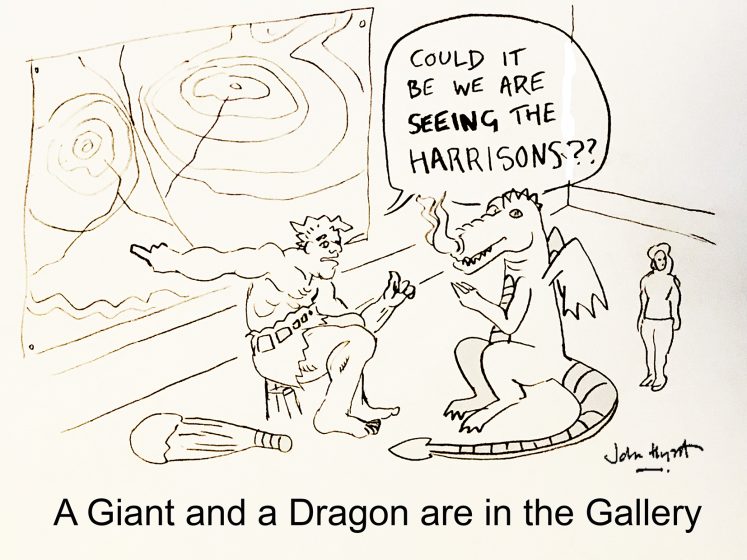
The second part of the title, ‘Can it be…’ sets up an open invitation to create with no right or wrong answer: a new receptacle. ‘we are seeing…’ invokes a communal act of perception. ‘… a Dragon?’ makes a metaphorical transference of map shape to mythic beast and is pure art, disarmingly naïve seeming, that invites multiple perspectival input from wherever it may derive art or science. It does not require a subject expertise to engage. It is available to children or adults, amateur or expert. The title question created and still creates a level playing field for access to the project.
I just want to dwell on this naming of the project out of these fundamental stages. It seems like a simple thing and so it is. It is also incredibly sophisticated and complex. What this question did going forward was act as a ‘strange attractor’ in the sense of how the term is used in Chaos Mathematics. A ‘strange attractor’ is a simple equation or fractal set that is a root for a complex structure and the pattern of behaviour of a whole (eco) system. Here, there are characteristics of the solution/response already carefully embedded in factors of the equation/question: greenness, community, imagination, and power. The imagist, folkloric question, ‘Casting a Green Net: Can it be we are seeing a Dragon?’, was an auto-generative, immaterial centre around which the fields of inquiry could find their overlapping shape determined by greenness, community, imagination, and power.
I have taken this experience into my own practice. For example, the regeneration of a derelict district of Liverpool by re-drawing it and naming it the Fabric District, emerging from its history, and organising an art/science festival in 2018 for the new District around an open non-intellectual/intellectual concept, Time Tunnel 1968-2018, asking, in a city known for its history of cultural radicalism, What has happened since May 1968?
Looking back down my own time tunnel, I remember the Harrisons with affection and respect.
Helen Mayer Harrison and Newton Harrison
about the writer
Helen & Newton Harrison
Helen Mayer Harrison (1927-2018) and Newton Harrison (1927-2018) were artists that pioneered art and ecology, developing an approach that characterised them also as educators. In their artworks, the Harrisons collaborated with planners, scientists, and communities on bioregional scale projects addressing ecosystem health in the context of climate change and the need for adaptation. Helen brought a perspective from her deep knowledge of literature, psychology, and education. She had held senior roles in Higher Education before beginning to collaborate with Newton. He had studied visual art and was already an acclaimed artist before beginning to collaborate with Helen. Their life’s work wove together these different knowledges and experiences, generating a unique and appropriate aesthetic that addressed the wellbeing of the web of life.
From Greenhouse Britain: Losing Ground, Gaining Wisdom 2007
The news is not good and it is getting worse
And for this island
Which is a much loved place
the news is not good and is getting worse
For instance
The Greenland Ice Shelf is breaking up
more rapidly than anyone thought
and this alone could cause an ocean rise
of up to 7 metres
Looking at the first two metre rise
Looking at the storm surge thinking about protection
thinking about where monies might come from
to protect land and people
The news is not good and it’s getting worse
animals are on the run plants are migrating
if the temperatures on the average
rise above 2 degrees Celsius one scenario predicts
Europe, Asia, America, and the Amazon
will lose 30 percent of their forests with concomitant extinctions
Looking at the 4 metre rise
Looking at the shape of the storm surge
we examined what a 5 metre ocean rise might mean
and we are looking at
about a 10,000 square kilometre loss of land
with about 2.2 million people displaced
…
Finally understanding
that the news is neither good nor bad
it is simply that great differences are upon us
that great changes are upon us as a culture
and great changes are upon all planetary life systems
and the news is about how we meet these changes
and are transformed by them or in turn transform them
Simon Read
about the writer
Simon Read
Simon Read is a visual artist and Associate Professor in Fine Art at Middlesex University. His practice relating directly to his current coastal and estuarine work, started in 1993 through the offer of a residency upon the Upper Thames leading in 1996 to the public commissioned work for the Thames Barrier: “A Profile of the River Thames from Thames Head to Sea Reach”.
The Harrison Studio:
What did you learn from the Harrisons?
I can see a lot of connections and regret that I was never to follow up an acquaintance with the Harrisons since they seemed to be operating in a parallel area both conceptually and technically.
My first introduction to the Harrisons was Portable Fish Farm in the ‘11 Artists from Los Angeles’ show in 1971 when I was a 2nd year student of Fine Art at Leeds University.
At the time, I was utterly non-plussed by the work since I had little concept of how it was compatible with my understanding of sculpture. I would have been unaware of the prescience of the work despite knowing European contemporaries such as Hans Haacke. However, at the time, I took more away from other artists in the show in particular Larry Bell, Bruce Nauman, Ed Ruscha, William Wegman, and the odd man out, Richard Diebenkorn. I think then I would have been looking more at studio work that was heavily influenced by conceptualism and artists’ use of the photograph. I was probably interested in the different schools of thought coming out of New York and California, where the Californian experience was so much more sensual.
I was very aware of the furore caused by Newton’s fish farm, due mainly to my then professor, Lawrence Gowing, who was vice-chair of the Arts Council and who took some responsibility for the show and wrote a spirited defence of the work in (I think) The Times.
After then, there was a long period when I was not so aware of the Harrisons until the Greenhouse Britain project in 2007 and my amazement at their securing funding from DEFRA. At that time, I had been collaborating with the arts consultants Haring-Woods on another project in Peterborough, who invited me to Gunpowder Park in Enfield to discuss further involvement with the Bright Sparks programme, and was currently supporting the Harrisons’ work in the Lea Valley.
Admittedly, my response was sceptical, although I found the principle of a walk-through type of map environment absorbing, I was sorry to have missed the benefit of their presence to animate the project. I was sceptical because I reacted in an Anglo-Saxon way against the somewhat evangelical tone of the project and the belief that you could parachute in and propose a solution for a specific geographic location for which I felt there was insufficient prior knowledge. Although I am instinctively distrustful of proselytising, I can fully appreciate the response of a DEFRA representative that the Harrisons are refreshing in that they feel able to get straight to the point and unabashedly talk about the big idea.
So, upon reflection, I can see a lot of connections and regret that I was never to follow up an acquaintance with the Harrisons since they seemed to be operating in a parallel area both conceptually and technically. My difference lies in the belief that everything must come from somewhere and that the best solutions should be homegrown. This is what lies behind my desire to get under the skin of a project/location and community to be confident that whatever I propose is appropriate to the situation. So, a fundamental difference I’m afraid.
Since then, I have found their Lagoon Cycle project and the watershed works inspiring for their scope and sense of scale and the audacity that it is possible to conceive a project on a continental scale without having to implement it.
I know that Helen had acknowledged the idea of context and influence by saying that the ‘force majeure’ aspect of their operation justifies the use of any strategy, no matter where it comes from. My academic training says that the aspects of culture that you are exposed to and the cultural context that you operate within have a huge bearing on the range of possibilities that you access in the formal strategies that you take. Obviously, nothing is absolutely original, and we all pass the same messages around but how we interpret them is crucial.
I was interested to learn that Newton’s early experience was as a painter, just as it was for me, but he was taught by early exponents of abstraction, if not abstract expressionism, and would have been aware of Clement Greenberg’s belief that the autonomy of the artwork was fundamental and that you should not need to look beyond the work itself for justification. Newton would have absorbed the sense that the phenomenological and behavioural characteristics of an artwork were the only narrative necessary to engage with it. I know that there is a strong means and ends argument here but the departure from the artwork as a vehicle for meaning in favour of the integrity of the work itself is also intrinsic to the Harrison’s belief in the primacy of natural processes and the living landscape itself.
There is also no way that Newton will have been unaware of the influence of conceptualism, which would have been a key justification for putting forward impossible ideas on a colossal scale because there is a cultural context to do so. The idea that the idea is sufficient and does not need to be activated is a basic tenet of conceptualism and indeed is the Harrison’s justification for proposing ambitious or even outlandish projects with such panache and certainty.
The early works such as the fish farm were shown in the context of a group of artists who we know had come directly from a conceptual (albeit Californian) mould. Even the pragmatic use of the unadorned paraphernalia of a fish farm allowed for the absence of a necessity for aesthetics and, as in other artists’ production, the opportunity to colonise criteria other than directly aesthetic for the organisation of material. Even with the context of this show, however, it would be fair to say that Newton Harrison’s work comes over as an outlier and already was on a journey somewhere else, clearly as a result of his alignment with Helen’s thinking.
Leslie Ryan
about the writer
Leslie Ryan
Leslie Ryan is the lead design-researcher for the Future Garden climate-adaptation projects within the Center for the Study of the Force Majeure, a research and educational center established by Helen and Newton Harrison. She is a registered landscape architect and long-time consultant and collaborator on the Harrisons’ projects.
Listening to the Harrisons talk about repairing our relationship with the land and working ― always ― to advantage of the life web was a watershed moment for me, a siren call that changed everything.
Listening to the Harrisons talk about repairing our relationship with the land and working ― always ― to advantage of the life web was a watershed moment for me, a siren call that changed everything. Their art practice modeled what landscape architecture could and should be: recognizing the land and the more-than-human others on the planet as partners with agency, rejecting framing nature as a set of ecosystem services that cast the natural world as a servant in service to human needs, and always looking beyond the spatial and temporal boundaries of here and now.
I soon left the landscape architecture office and joined them as a lowly graduate student and studio assistant in the Visual Arts Department at UC San Diego. Their support would become instrumental in my receiving the American Academy of Rome Fellowship in Landscape Architecture (1995), and Harrison refrains such as “how big is here and how long is now” and “pay attention to the costs of your beliefs” would reverberate throughout my research project while a Master of Environmental Design student at Yale, Newton’s alma mater.
The Harrisons threw me in the deep end when they asked if, for my first project as their assistant, I would draw the rubble flowers for Trümmerflora: On the Topography of Terrors (1988). I didn’t know which plant species would make sense, the site was haunted by a terrifying past, and the thought of nature improvising with the detritus, seeds, and memories buried in the rubble was overwhelmingly beautiful. Spontaneous urban vegetation has since become a significant field of study and the subject of books, papers, and thesis projects in landscape architecture, but at the time it was uncharted territory. There are common threads running through Trümmerflora and Future Gardens, one of the Harrisons’ final projects, as both focus on adaptation to change, natural regeneration, and the emergence of new ecological assemblages. As part of the Center for the Force Majeure, I continue to carry forward the Future Gardens work, with discussions underway for climate-adaptation projects in Central Europe and closer to home at UCSD/Scripps Institution of Oceanography.
The Harrisons’ work mirrored what they saw in natural systems ― an inherent inventiveness and sustained improvisation and play with what was at hand (the practical and the playful were ever-present in their work). I see the Harrisons’ art as a type of rematriation. The fundamental rule of giving back is that what is returned cannot be broken or polluted, and what has been damaged first must be repaired. Indigenous cultures were a constant model for the Harrisons of cultural practices that work with nature rather than against it and how taking from nature could be done in ways that preserved the system.
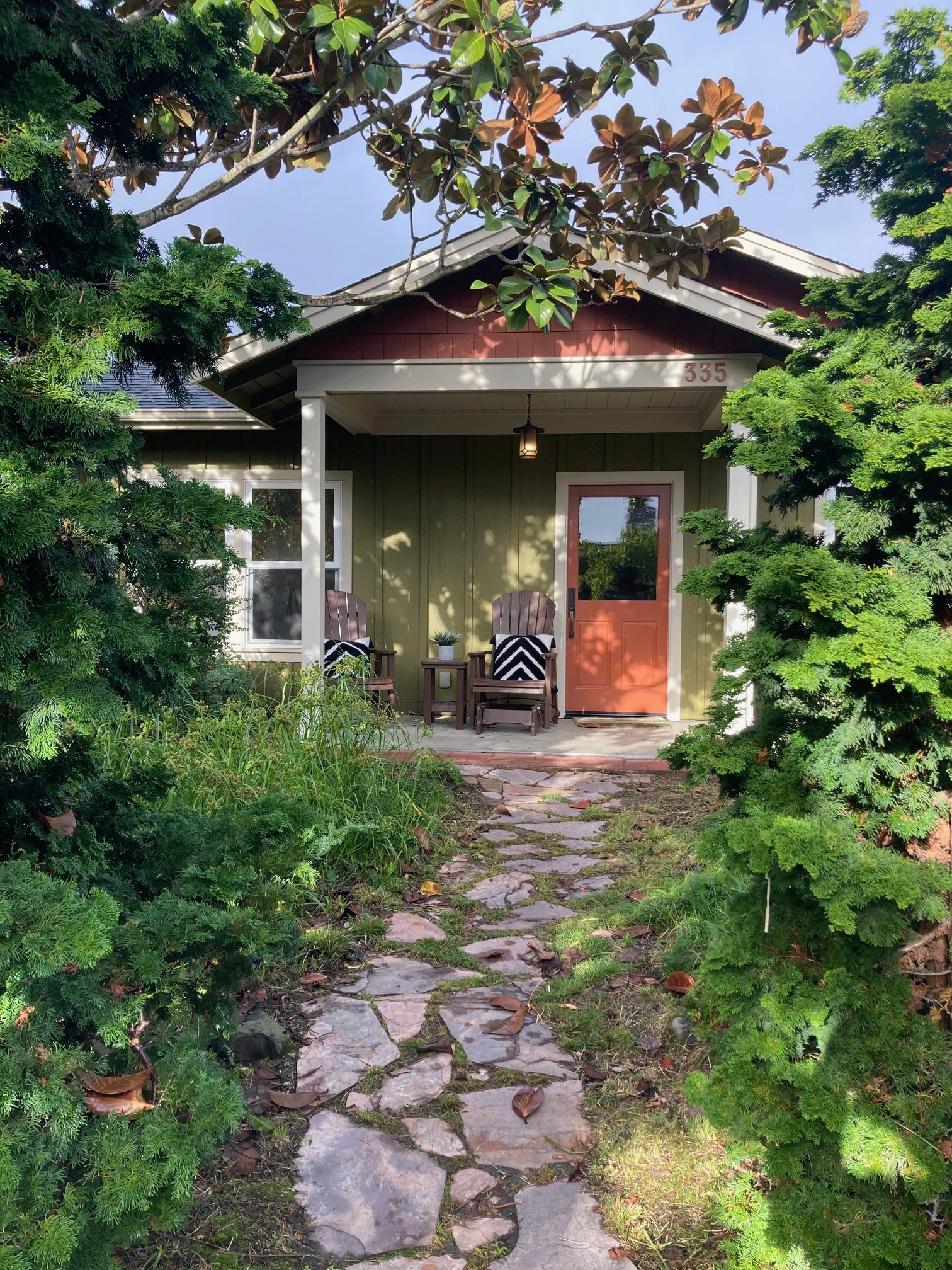
Each person at Newton’s memorial service in Santa Cruz had their own stories to tell. The Newton I knew was like the god Jupiter, bellowing from a mountaintop and tossing lightning bolts. Helen matched his thunder ― more than once I had to crawl out of sight as those two clashed. And then it would be dinnertime and only salads would be tossed. While the breadth of the Harrisons’ practice isn’t readily distilled into simple guidelines for living well on earth, there are a few elements that stay with me: the importance of invitations, of scale shifts and scanning for information, of redundancies and multiple perspectives, of imagining the potential consequences of our actions and then acting for the benefit of the life web.
Visit my website for more information.
David Haley
about the writer
David Haley
David makes art with ecology, to inquire and learn. He researches, publishes, and works internationally with ecosystems and their inhabitants, using images, poetic texts, walking and sculptural installations to generate dialogues that question climate change, species extinction, urban development, the nature of water transdisciplinarity and ecopedagogy for ‘capable futures’.
Through working, touring, and engaging with Helen and Newton, my ecological arts practice continues to be found and like them, I hope to enable others to seek their ecological arts practices.
Seeking An Ecological Arts Practice
Seeking an ecological arts practice, my Masters in Art As Environment course at Manchester Metropolitan University (MMU) concluded in 1996 with an invitation to project manage and lead the research for Helen and Newton’s Artranspennine98[1] project, Casting A Green Net: Can It Be We Are Seeing A Dragon? The project gave me the opportunity to develop arts-led, practice-based processes of research that opened new ways of questioning the Countryside Information System of The Institute of Terrestrial Ecology[2], and led to my Ph.D.. Mapping the ecosystems of Northern England became a ‘whole systems inquiry’ that included the environmental terrain, agricultural, cultural, and economic contexts, as well as the map-makers intentions. Satellite and field study data was supplemented by many car journeys back and forth, between Liverpool to Hull, to see the terrain and talk with many people from different disciplines and walks of life. Thanks to Professor John Hyatt, the project itself and the production of the six large maps was based at MMU’s Department of Fine Arts. We had regular ‘Open Studio’ events to generate conversations with academic, industry, and civic experts, and arts and design students.
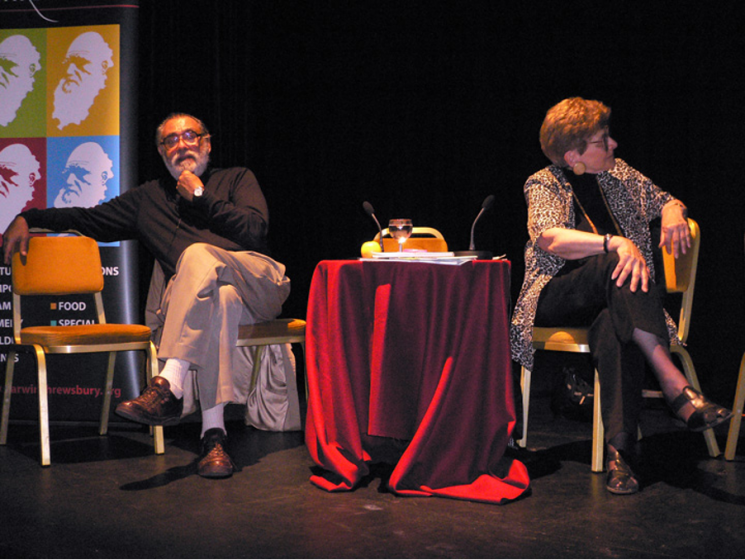
The exhibition opened at Bluecoat Gallery, Liverpool, and in 2000, thanks to Richard Scott of the National Wildflower Centre, was shown at the Society for Ecological Restoration’s (SER) first World Conference, at the Adelphi Hotel, Liverpool. The Harrisons gave a keynote presentation with the work, in the hotel’s capacious lobby. My relationship with SER, as Ecoart Symposium Coordinator/Chair culminated with their World Conference in Manchester in 2015.
In 2005, I was commissioned to curate Evolving the Future, an international three-day conference as part of the Charles Darwin bicentennial celebrations in Shrewsbury. At the end of The Harrisons’ closing keynote lecture, I invited them to consider a project that would focus on mainland Britain as one ecosystem under stress from climate change. We toured the length and breadth of Britain, for a year, meeting many people, to develop a project proposal for potential funders. Finally, Chris Fremantle made a successful application to Defra UK[3], as the Harrisons and I flew to Budapest for a conference. We appointed Chris as Producer, and I became Associate Artist. Gabriel Harrison designed and produced the exhibition and the project became Greenhouse Britain: Losing Ground, Gaining Wisdom. It toured six UK venues (2007-2008) and several in the USA (2009-2010), before becoming integrated into the Harrisons’ Force Majeure (2010) works.
At one point, Defra nearly withdrew Greenhouse Britain’s funding, as they perceived the work to have exceeded the Government’s climate change remit of ‘raising awareness’ to include ‘behaviour change’. We renegotiated the terms of the project to comply with the restrictions, letting the poetics carry the impact further. Meanwhile, a friend from Casting A Green Net, Professor Tony Bradshaw, called me one evening, concerning sea level rise mitigation: “…, but the Environment Agency are developing plans for managed retreat.” I explained that ‘managed retreat’ used engineering and military metaphors, while the Harrisons had coined the phrase, ‘graceful withdrawal’ – metaphors of becoming and acquiescence. And this insight chimed with the Tai Chi concept of ‘yielding’ that has grown through my practice – Yield: give way to gain (Haley 2018). Greenhouse Britain also contained several sub-projects and initiatives including, ecological development of the Lea River Valley, a charrette with Professor Paul Selman’s landscape research students at the University of Sheffield, flood strategies for the River Avon and the River Thames; and opportunities for contained ecological housing/food production to protect the headwaters of all the rivers rising in the Pennines. However, the final UK exhibition at London’s City Hall (2008) met with resistance from the incoming new Mayor of London, Boris Johnson, who saw our work as challenging his proposed Tilbury desalination plant. After a week’s stand-off, Boris Johnson backed down when he realised that the Guardian newspaper was writing an article that depicted his first act as Mayor being the banning of an ecological arts exhibition that offered opportunities to save the Capital from sea level rise.
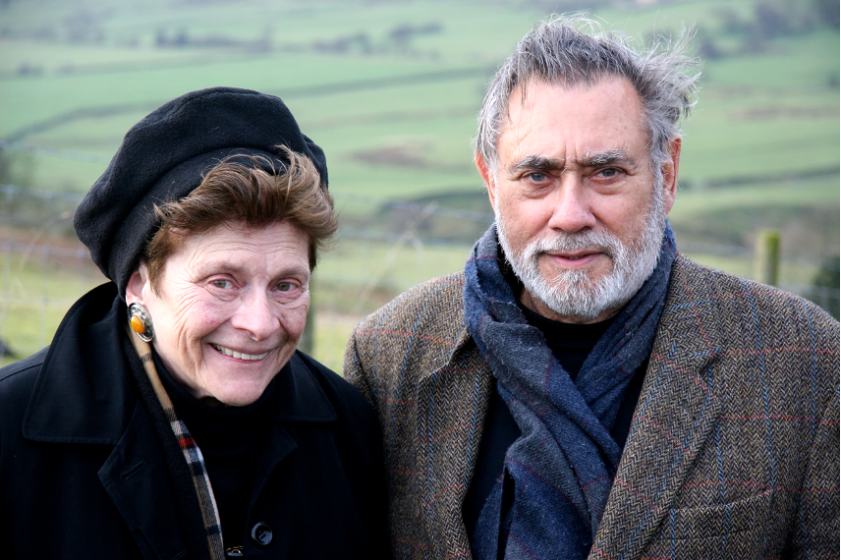
Through 2007, while working on Greenhouse Britain, the Harrisons and I toured Taiwan to develop the unrealised Greenhouse Taiwan. However, as we toured, we developed the idea of ‘Post-disciplinarity’ ― around a roundtable, all the disciplines sit with equal status while maintaining the integrity of their discipline. Then, the most urgent problem/question of the day is placed at the centre of the table for all to address, together.
We didn’t always agree. And that was one of the ways we learned from each other. They didn’t always agree. And that was one of the ways they learned from each other. Through working, touring, and engaging with Helen and Newton, my ecological arts practice continues to be found and like them, I hope to enable others to seek their ecological arts practices.
References
Firbank, L. Harrison, H. M., Harrison, N., Haley, D. Griffith, B. 2009. A Story Of Becoming: Landscape Creation Through An Art/Science Dynamic in eds. Winter, M. & Loby, M. What is Land for? The Food, Fuel and Climate Change Debate. Earthscan, London.
Haley, D. 2018 Art as destruction: an inquiry into creation, in ed. Reiss, J. Art, Theory and Practice in the Anthropocene. Vernon Press, Wilmington Delaware, and Malaga, Spain.
[1] Artranspennine98 was an initiative between Tate Liverpool and the Henry Moore Foundation, Leeds, to create a corridor of artworks between the two cities. The Harrison saw the ecological opportunity of ‘rhyming the Humber and Mersey estuaries.
[2] The Institute of Terestrial Ecology merged with other environmental research agencies to become the Centre for Ecology and Hydrology.
[3] Defra UK is HM Government’s Department for Environment, Food and Rural Affairs.
Lewis Biggs
about the writer
Lewis Biggs
Lewis Biggs is Distinguished Professor of Public Art at Shanghai University (since 2011), and an independent curator (Artranspennine 1998; Aichi Triennale 2013; Folkestone Triennial 2014, 2017, 2021; Land Art Mongolia 2018). He is also Chairman of the Institute for Public Art, a global network of researchers concerned with place creation through culture / art-led urbanism, and supporting the International Award for Public Art.
We were all impressed with the quality of the research that went into the production of the various maps, and how very thought-provoking their synthetic approach (art-science-text-image) could be. That for me is their significant legacy.
I first became aware of ‘the Harrisons’ as a result of the controversy sparked by their contribution commissioned for the exhibition 11 Los Angeles Artists at the Hayward Gallery, London in 1971. Chiefly I recall a curator for whom I had great respect remarking that the artists were ‘charlatans’, which struck me forcibly. Had I paid insufficient attention to my own (still very youthful) enthusiasms for art in deciding which people involved were charlatans and which were not? Where is the line between shaman and charlatan? What is the role of authenticity in art? Is acting an art form? Portable Fish Farm: Survival Piece #III elicited many reactions that were more extreme than ‘charlatan’, and so contributed to the considerable expansion of the frame of reference for art in the following 20 years.
So, when Robert Hopper, with whom I was curating Artranspennine98, suggested in 1996 that we commission Helen Mayer and Newton to contribute to our exhibition, I was delighted to agree. The exhibition invited its audience to travel across the North of England from coast to coast (Hull to Liverpool or vice versa) experiencing around 40 mainly newly commissioned / site-specific artworks or exhibitions in 30 different locations. It was an invitation to artists and audiences to engage with the history and geography of the birthplace of the industrial revolution, the place where the modern understanding and appreciation of ‘landscape’ was invented.
Helen Mayer and Newton were accommodated at Bluecoat Gallery Liverpool, where Bryan Biggs (no relation) the Director was a very welcoming collaborator and host. They were invited to collaborate with local people to explore the possibilities for regeneration in the area and to exhibit the resulting maps at the Bluecoat and on the internet. They proposed that all the rivers should be cleaned, and woods and meadows expanded. That the geological timescale of re-establishing flora and fauna to ‘health’ could be speeded up through better use of existing ‘wastes’ and spoil heaps. The project was titled Casting a Green Net: Can It Be We Are Seeing A Dragon? The image they found in the coast-to-coast map of the country showed the body of the dragon through the industrialised lower ground and valleys, the wings of the dragon in the Pennine hills.
I’m not sure what or whether they contributed to a shift toward social consciousness about the environment. I remember being impressed with how the artists would pounce on specific words that emerged in the public workshops and highlight them for further discussion. A process of simplification presumably resulting from their many years of practice with workshops and focus groups. Bryan remembers how they constantly bickered with each other, and I remember thinking that their approach was aggressively ‘direct’ in that un-English way. But we were all impressed with the quality of the research that went into the production of the various maps, and how very thought-provoking their synthetic approach (art-science-text-image) could be. That for me is their significant legacy, plus the fact that they were gifted communicators: I think of their Rorschach process to ‘discover’ iconic images from maps every time I’m faced by an artist who struggles to find an image or a metaphor that expresses their project.


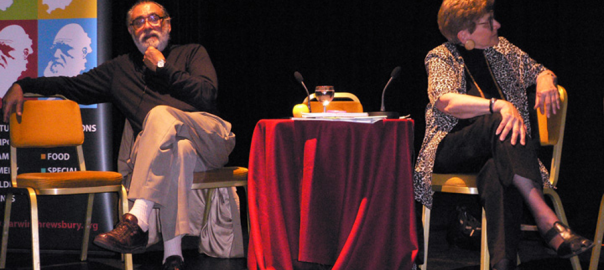
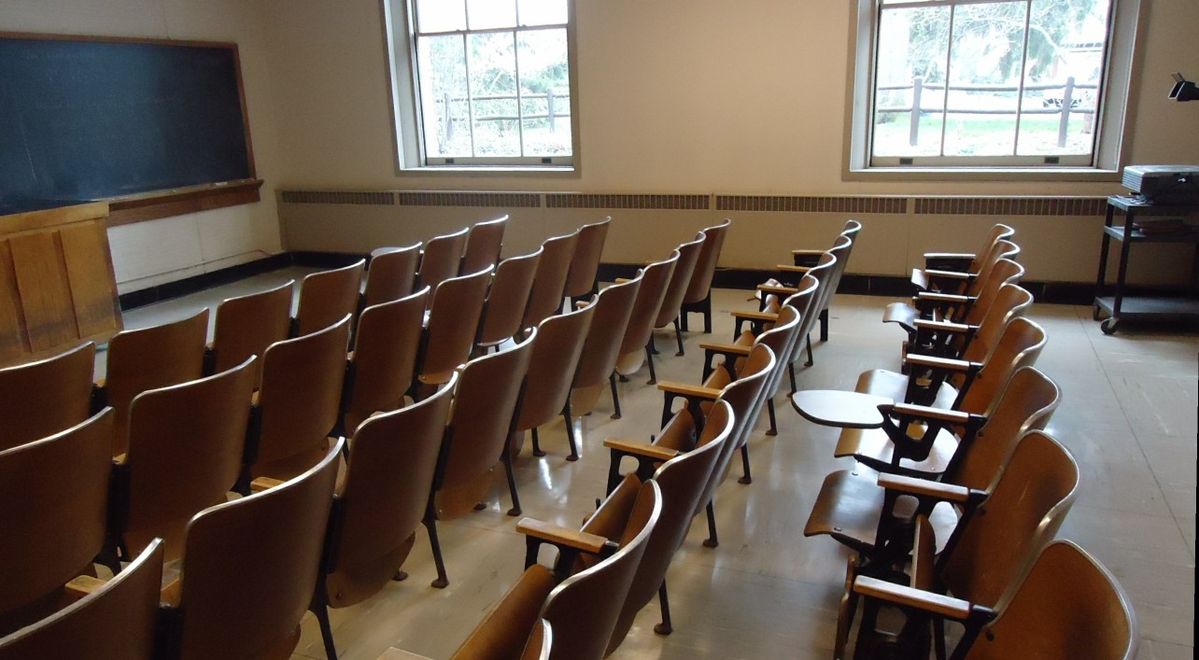
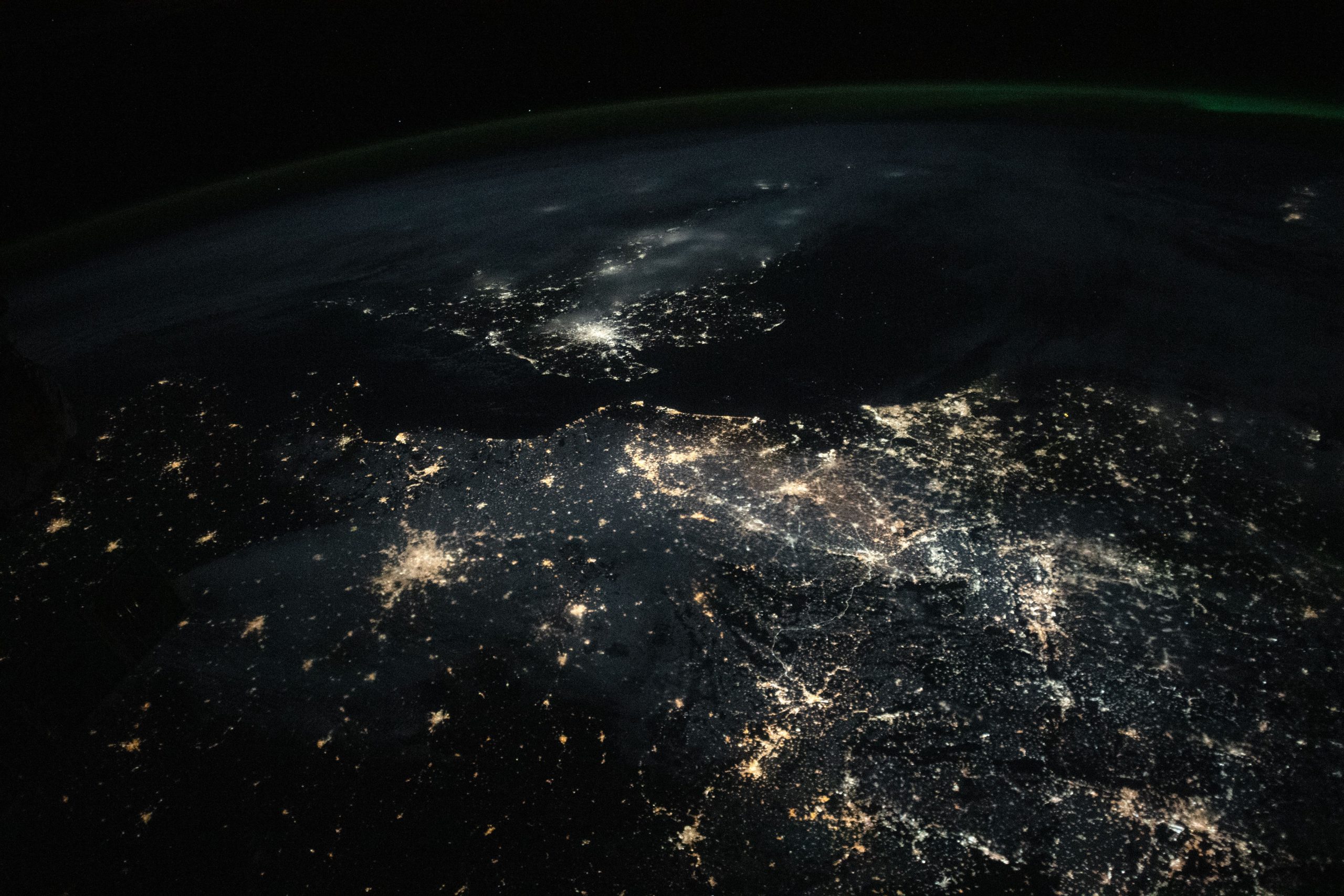
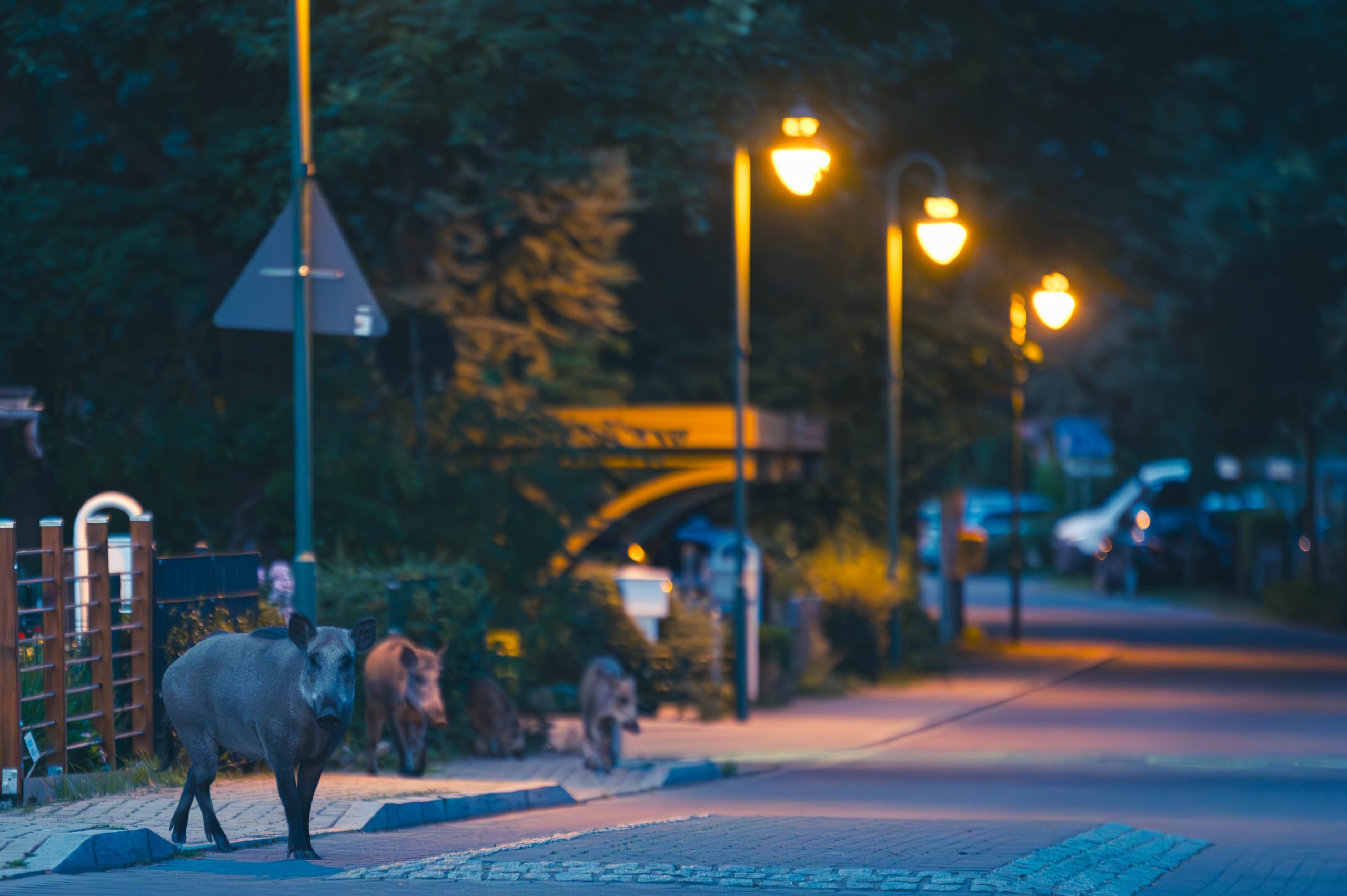
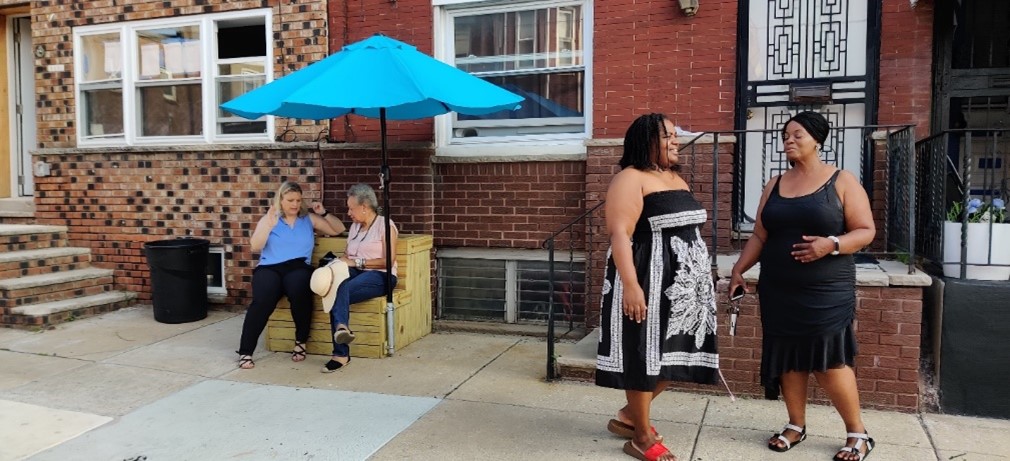
Leave a Reply